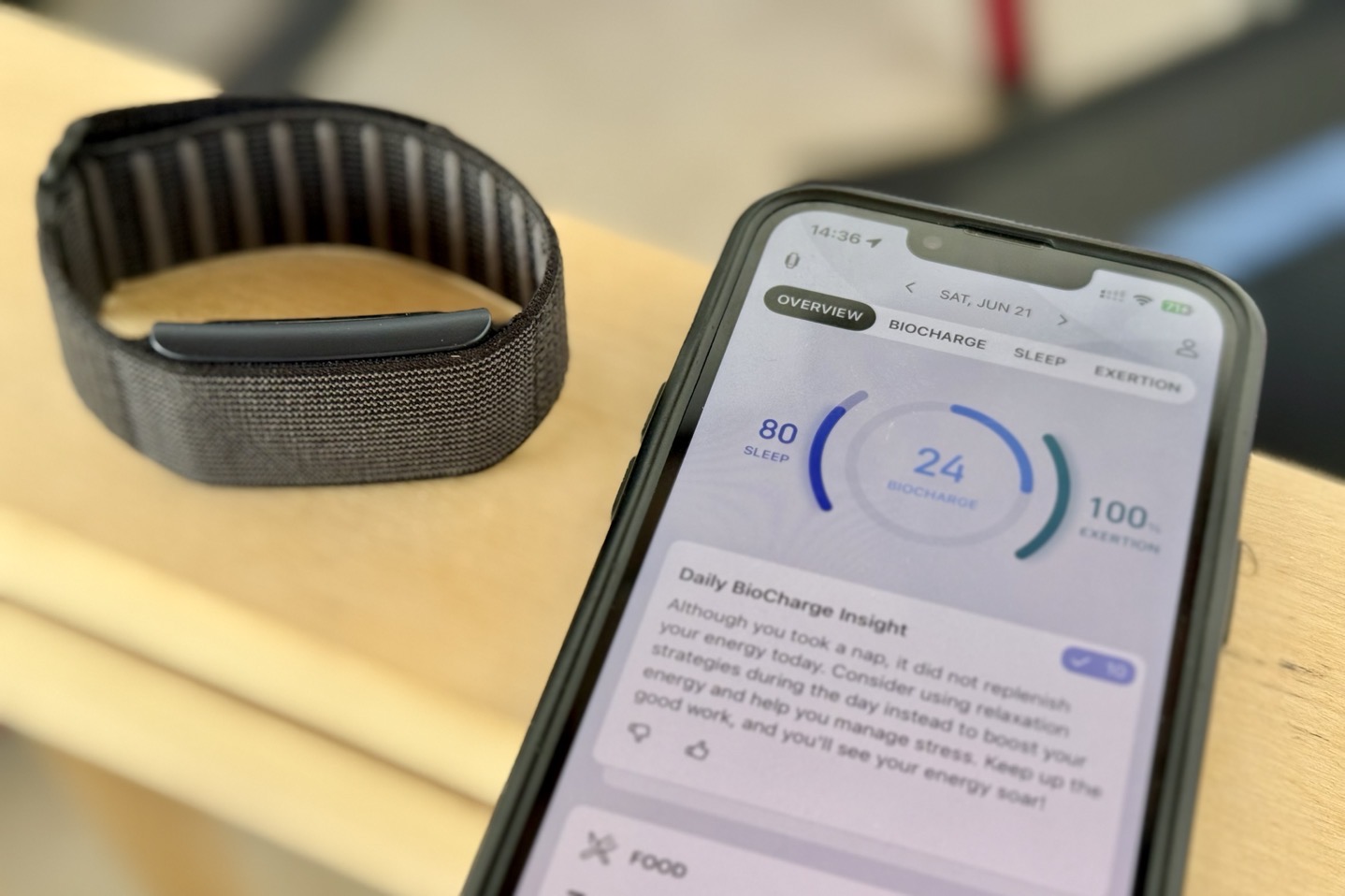
Amazfit has (once again) fired shots across the bow of mainstream competitors. This time taking aim primarily at Whoop, but also equally as much against a flotilla of other companies’ entrants in the display-less tracking market (recently Polar’s announcement of a unit coming in September). Unlike Whoop, this device requires no subscription, and a one-time cost of a mere $99 (less than half the cost of a year of Whoop).
While the company announced the Hyrox version a few weeks back, it didn’t actually offer that unit for sale. It was given out to participants at the Hyrox World Championship. Further yet, they didn’t even announce a non-Hyrox version. That changes with today though, with the main product simply called Amazfit Helio, and of course, priced at $99. It’ll ship immediately to anyone with a credit card.
I’ve been using it for the last few weeks, seeing how well it works. Most notably, comparing it side-by-side with the Whoop band as well. Thus, I can pretty easily compare where things work well, and where they fall short. The answers might surprise you.
The Hardware:
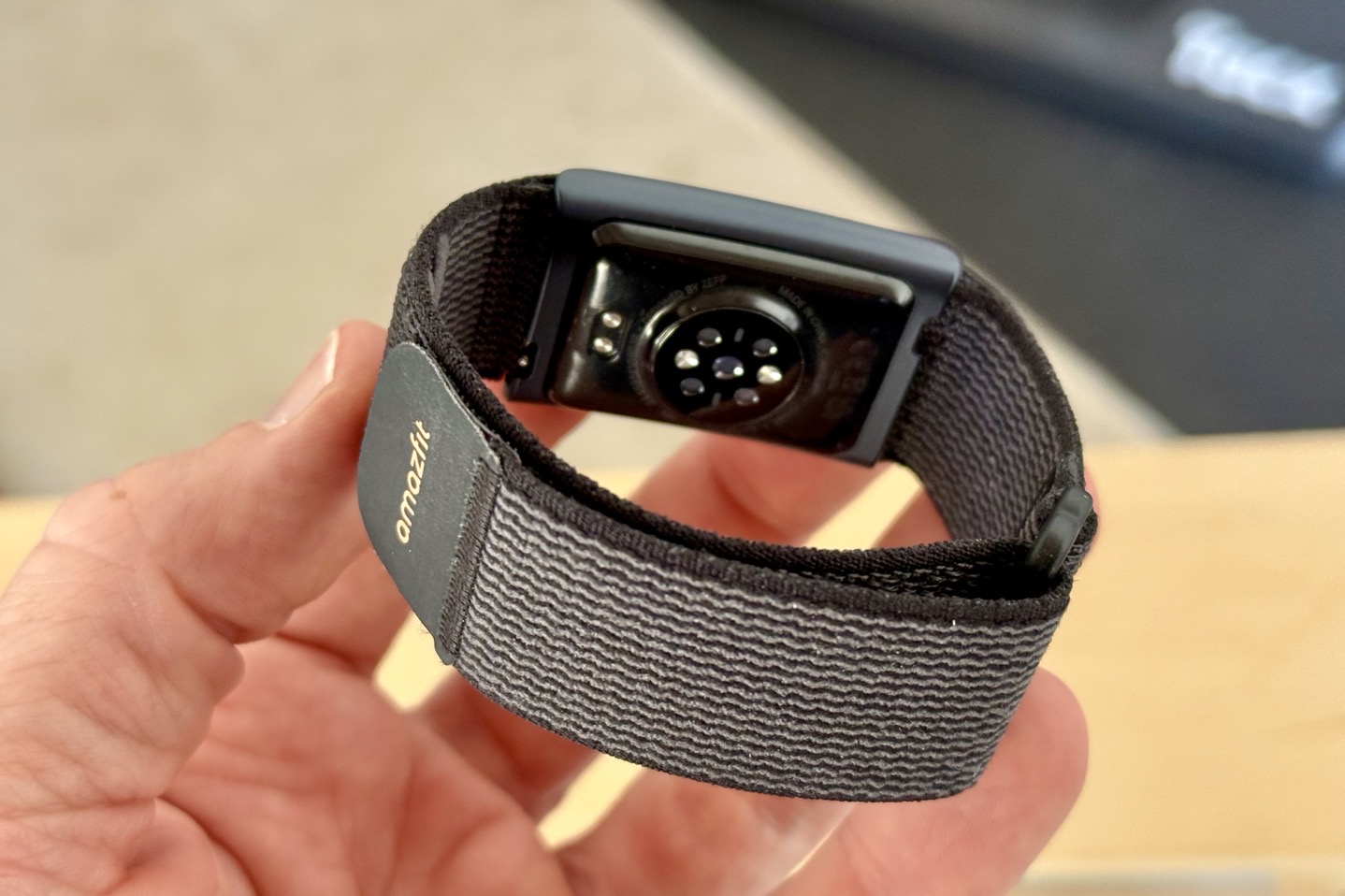
In terms of the hardware, it’s pretty straightforward. You’ve got an adjustable nylon band, and a tiny little USB-C charging puck:
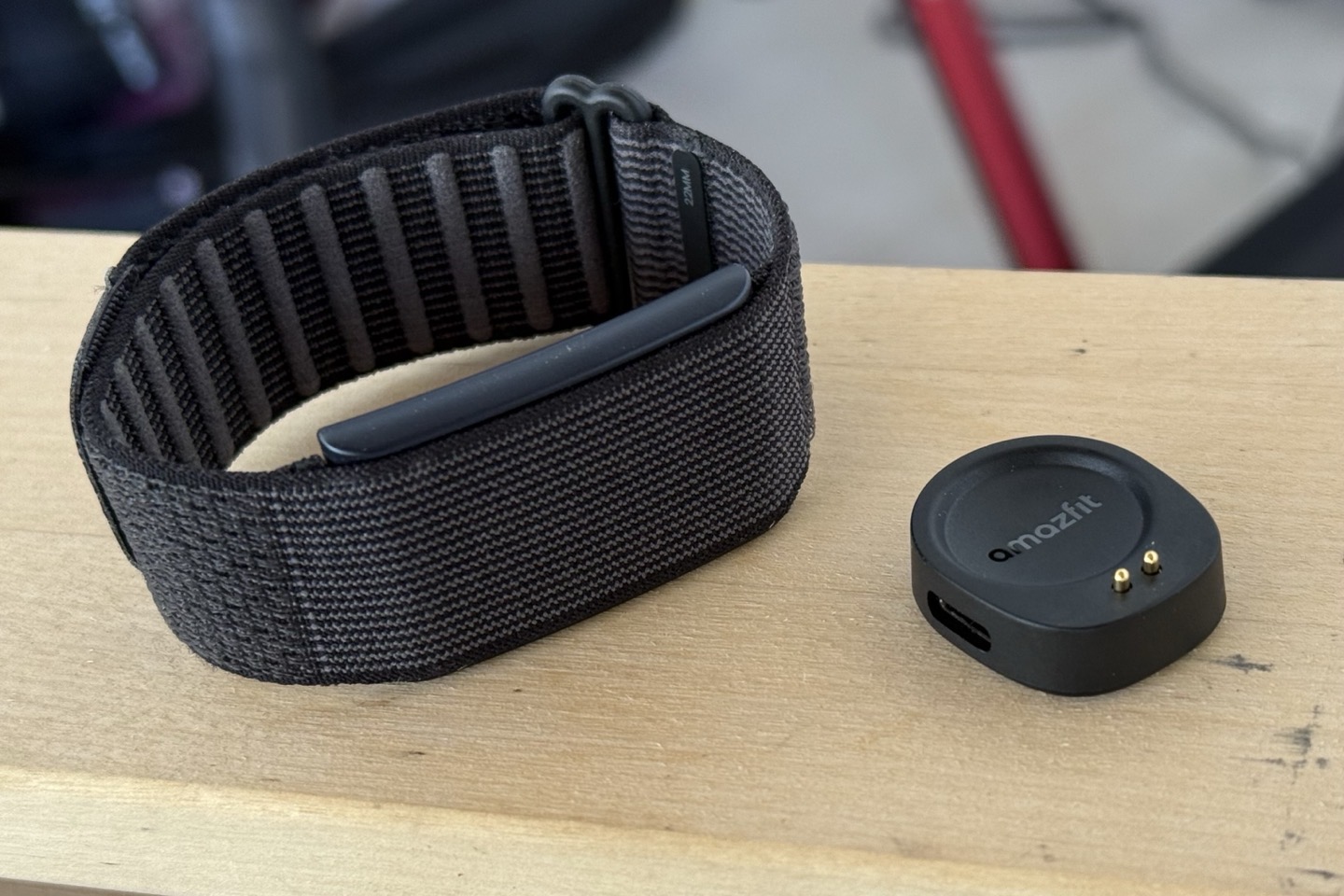
For the record, you are totally going to lose this roughly penny-sized charging puck. The only good news is that the battery life, claimed at 10 days, does seem pretty legit in my testing. So, hopefully you lose it immediately after charging, and can then acquire another one before it dies again. I’m half tempted to glue an AirTag to it.
In an case, the band is super lightweight, just a mere 20g:
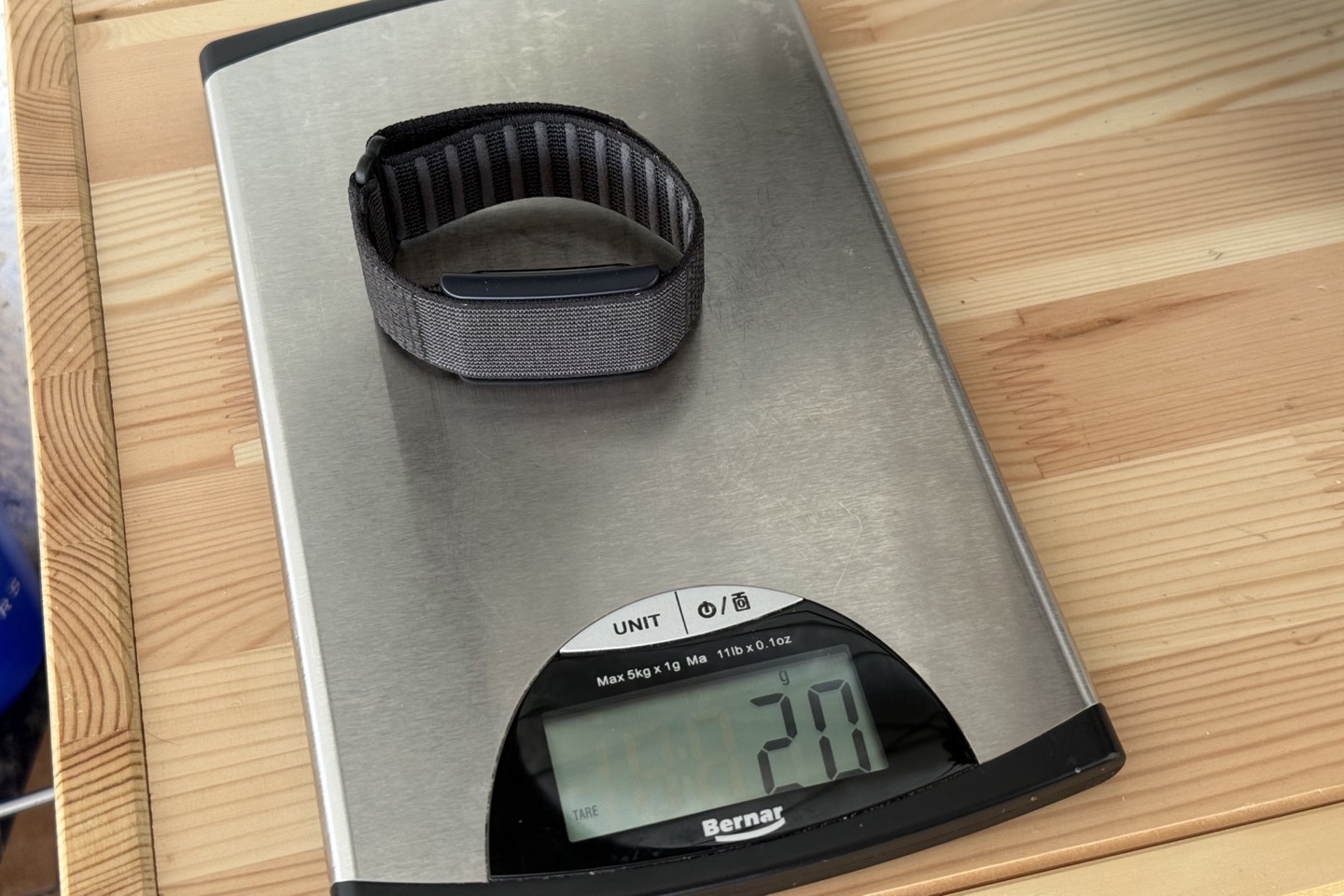
It is by far the lightest band out there, with the Whoop 5.0/MG coming in at ~28g:
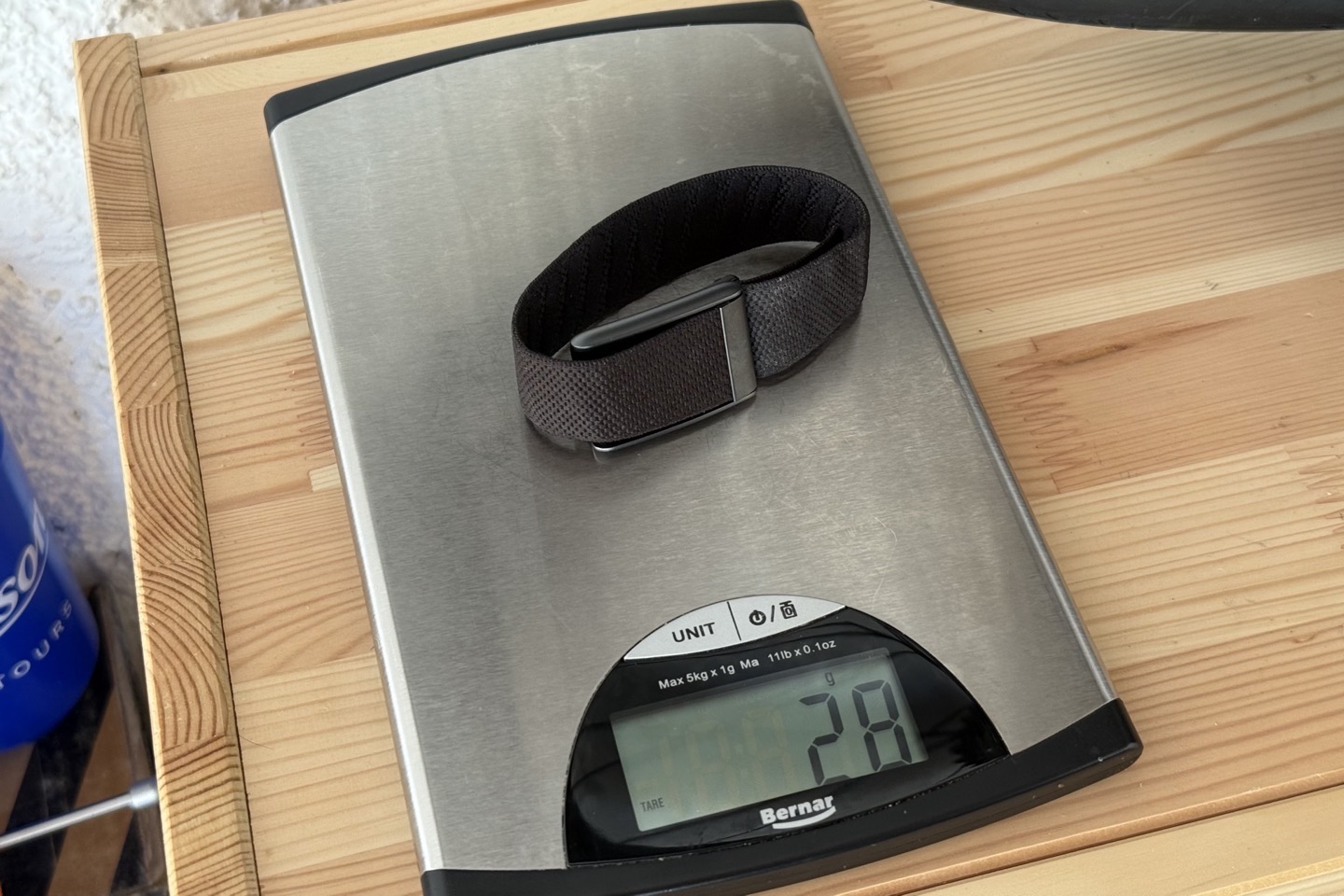
However, one (pretty substantial) gap is that it doesn’t have any sort of other band options at this point. Notably, no bicep/arm band option. That super popular option is key for many people to wear devices like this out of sight. In asking AmazFit, they’re optimistic they’ll get one out in July at some point, which is good to hear that it’s in the works.
The Basics:
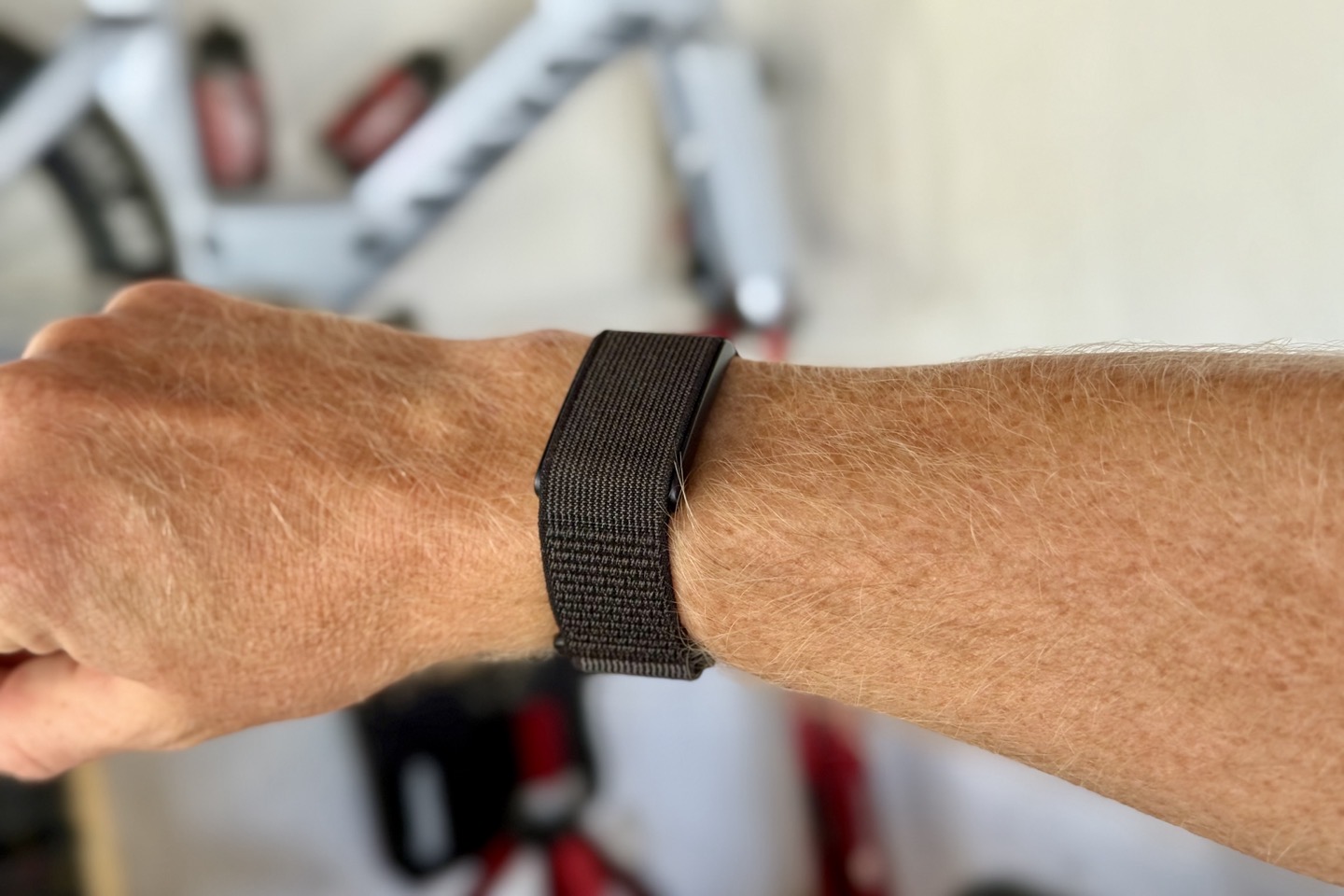
Starting off with the nylon band, overall, it’s quite comfortable. I barely notice it, given its light weight as well as its overall design. That said, I will note that the strap is actually kinda small, and requires fully undoing the strap (beyond the buckle) to slide on my not-very-big-wrist. Best I can tell there’s only a single size SKU, so this could be a challenge for folks with larger wrists. Time will tell. Officially it expands from 145mm to 205mm.
As with all nylon/fabric straps, it’ll retain moisture. I point this out because it’s something a lot of people don’t think about when they then do a workout and shower afterwards, the result of which is wet shorts/couch/pants/shirt/etc if you lay your wrist down on yourself/objects. It’s the same problem Whoop has with their band (or Apple/Garmin/COROS/etc with theirs), except in the case of all of those companies, they sell alternative strap designs.
The good news is that the Helio band uses a 22mm common watch band connector, so technically, you could put it on anything you wanted.
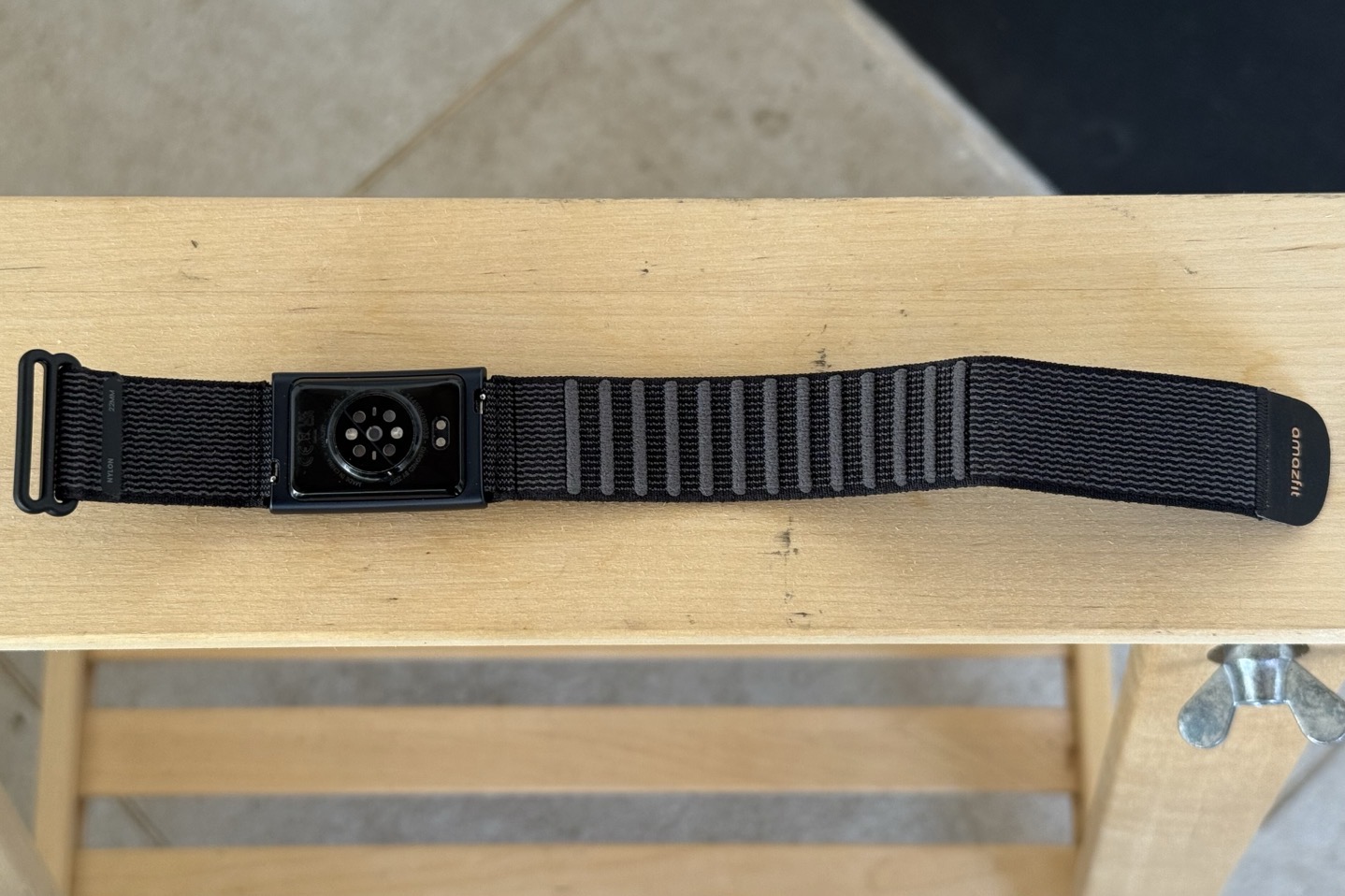
Now, with that said, it’s really as simple as wearing it. There are no buttons, no display, no user-facing LEDs…nothing. However, there is a vibration motor internally, which you can use to set alarms. The vibration is OK, a bit more gentle than I’d prefer (both in terms of strength, and the pattern). You can double-tap to end the alarm.
Meanwhile, on the back/underside of the device is an optical heart rate sensor:
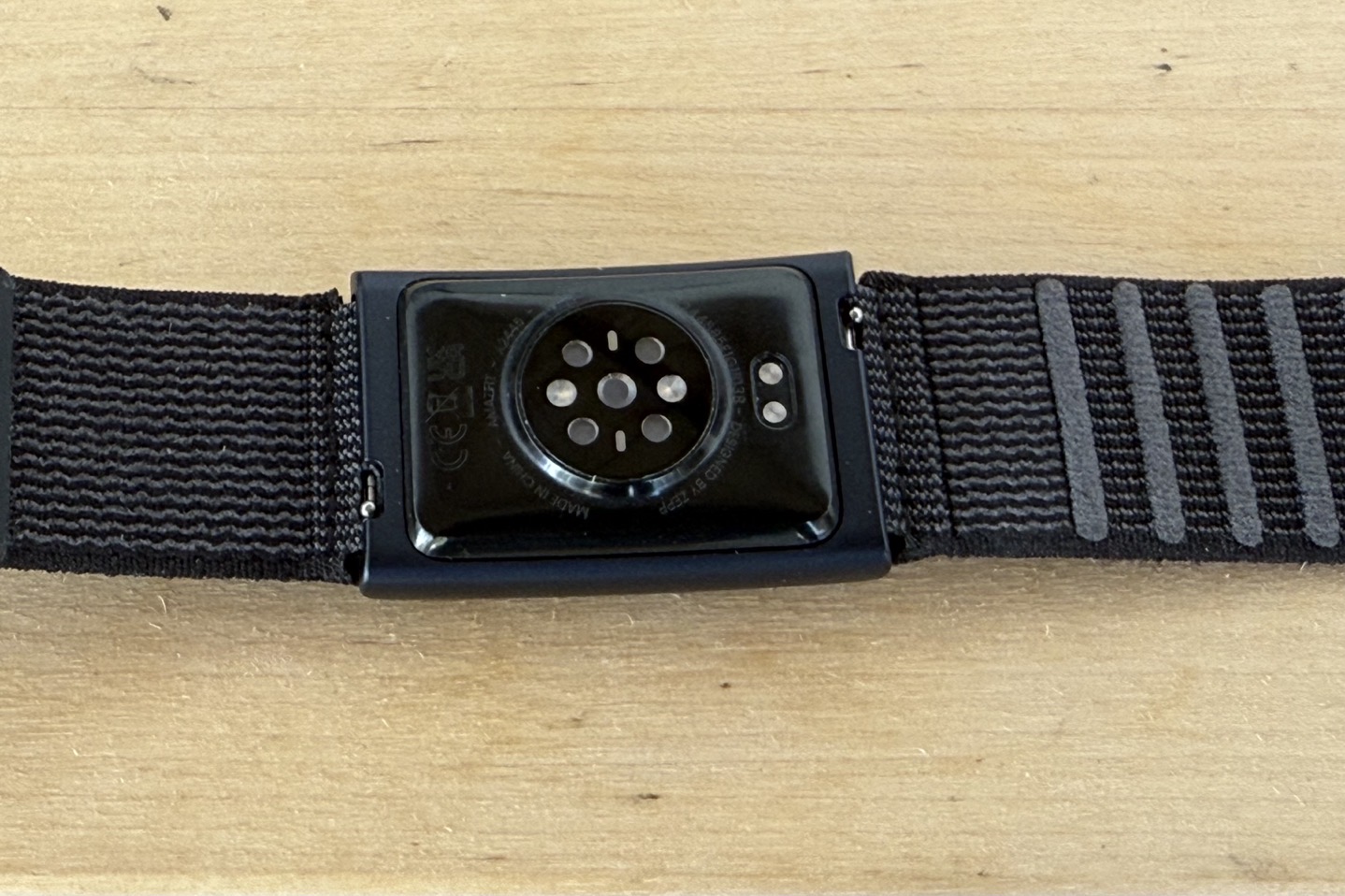
This sensor stays on 24×7 to measure heart rate during both daytime activity and workouts, as well as sleep. It also includes the ability to measure blood oxygen levels, as well as stress. Further, it has high/low heart rate alerts, and can broadcast via Bluetooth Smart to 3rd party apps (e.g. Zwift, Peloton, etc…). All of this is reasonably in line with their competitors.
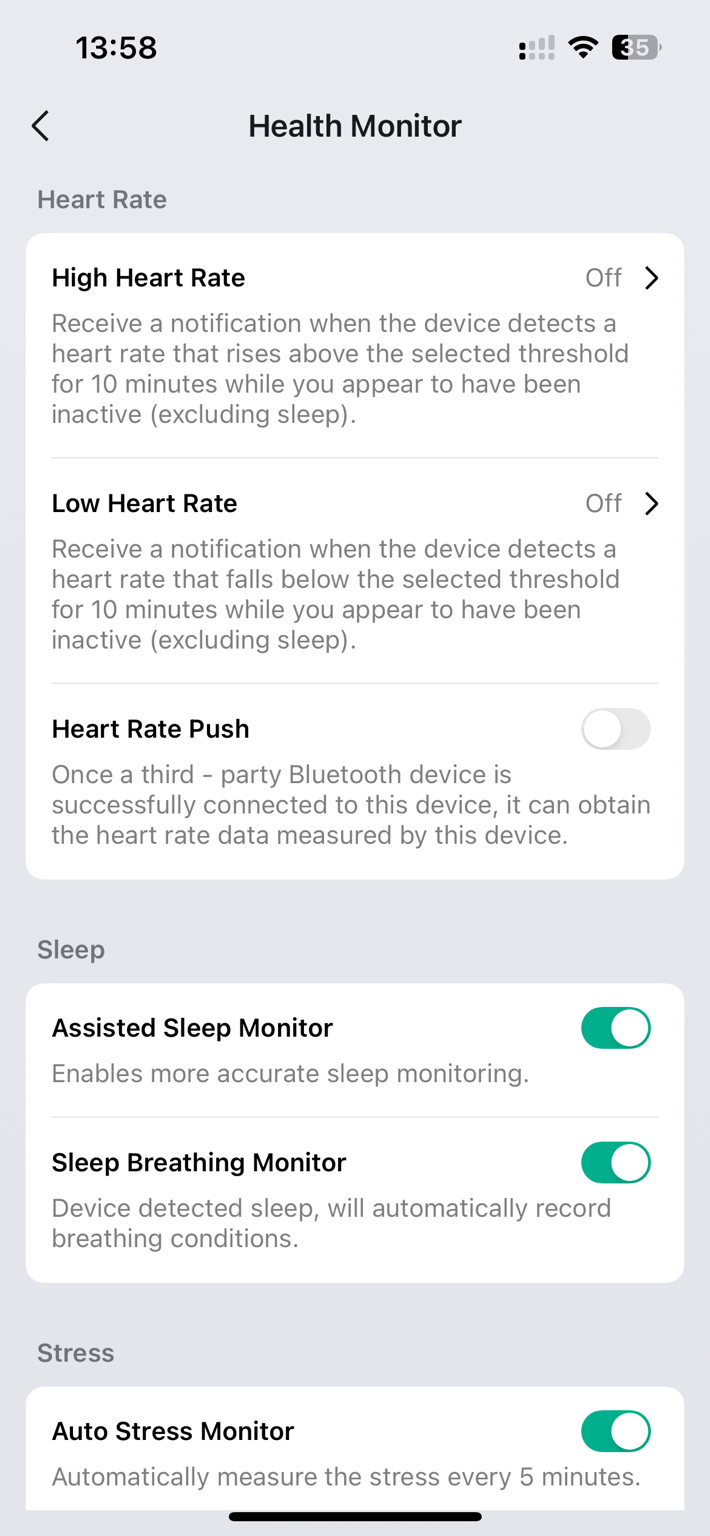
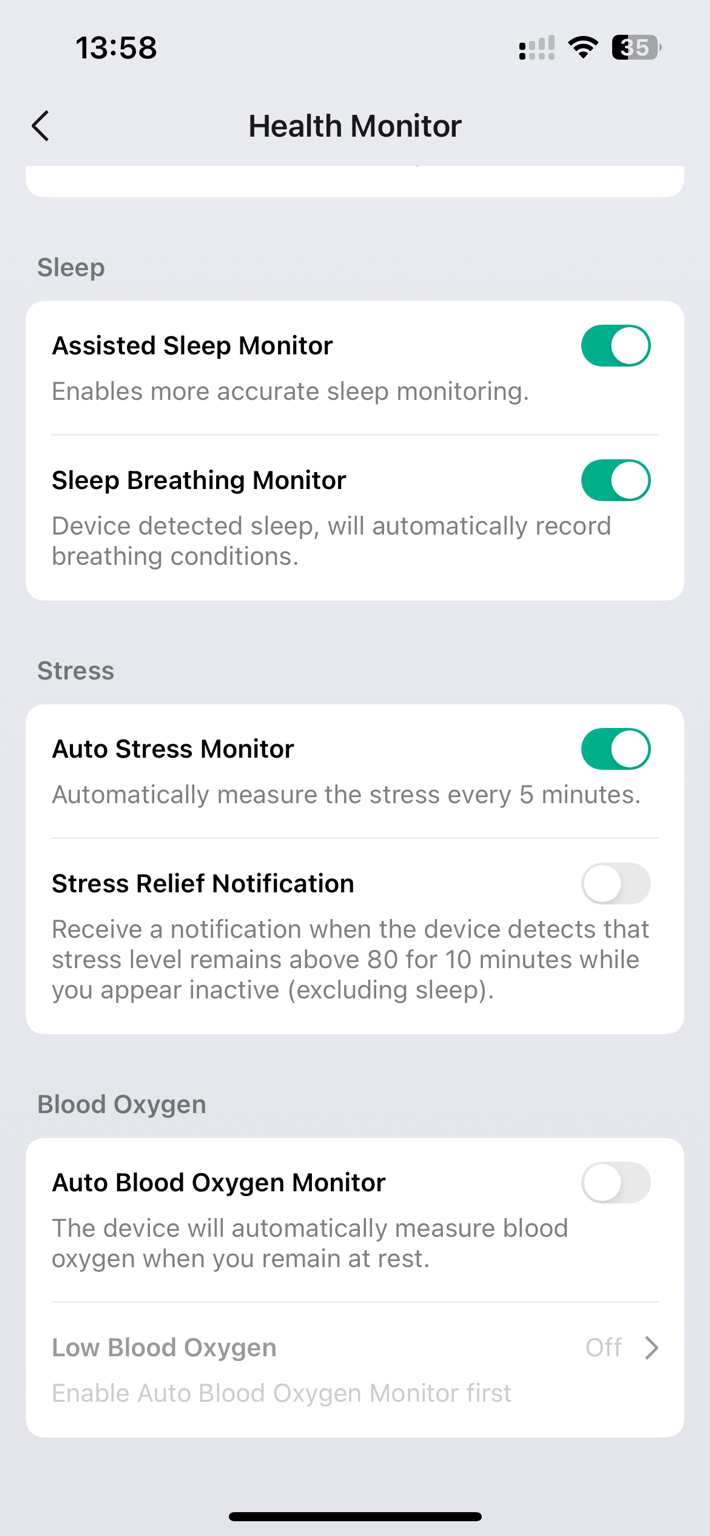
All of these things are configured in the settings panel of the Zepp app, which is Amazfit’s confusingly named app.
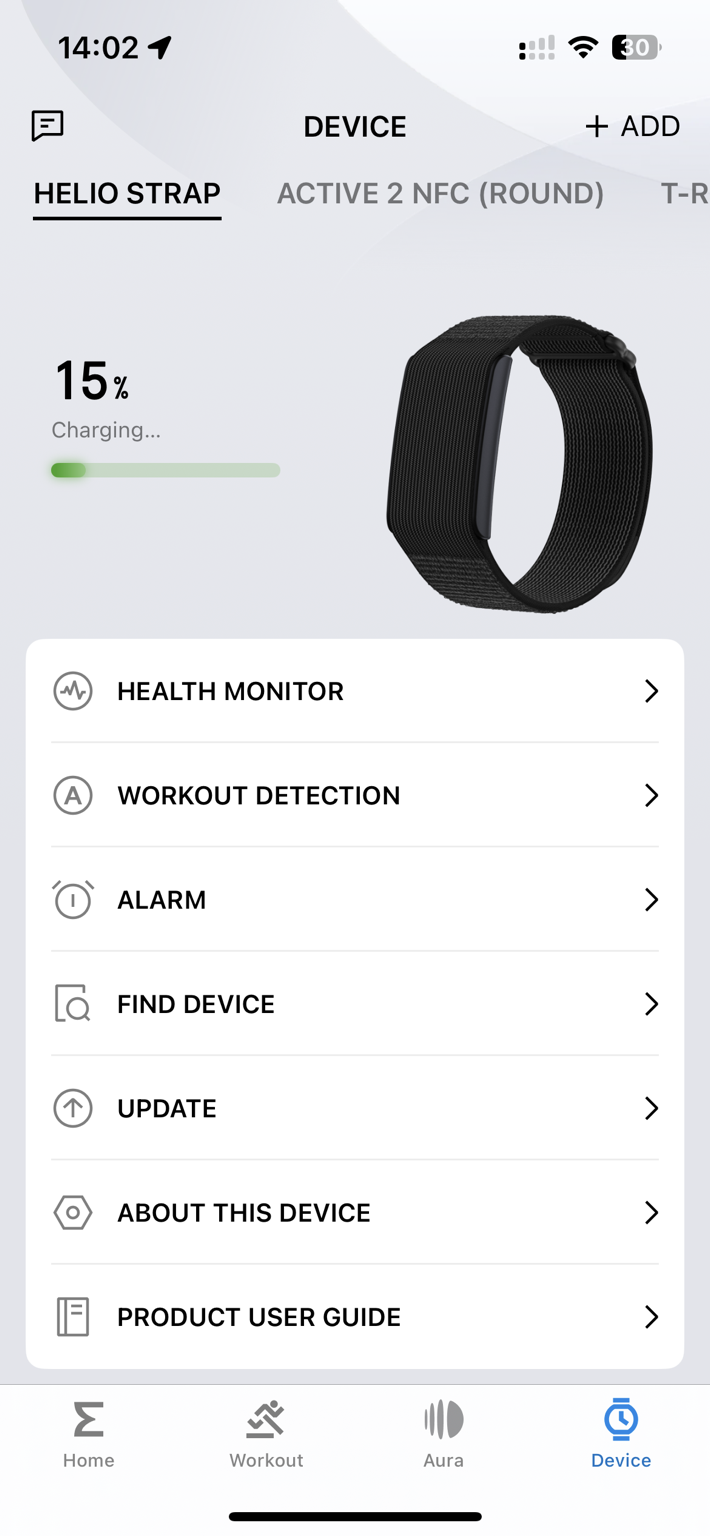
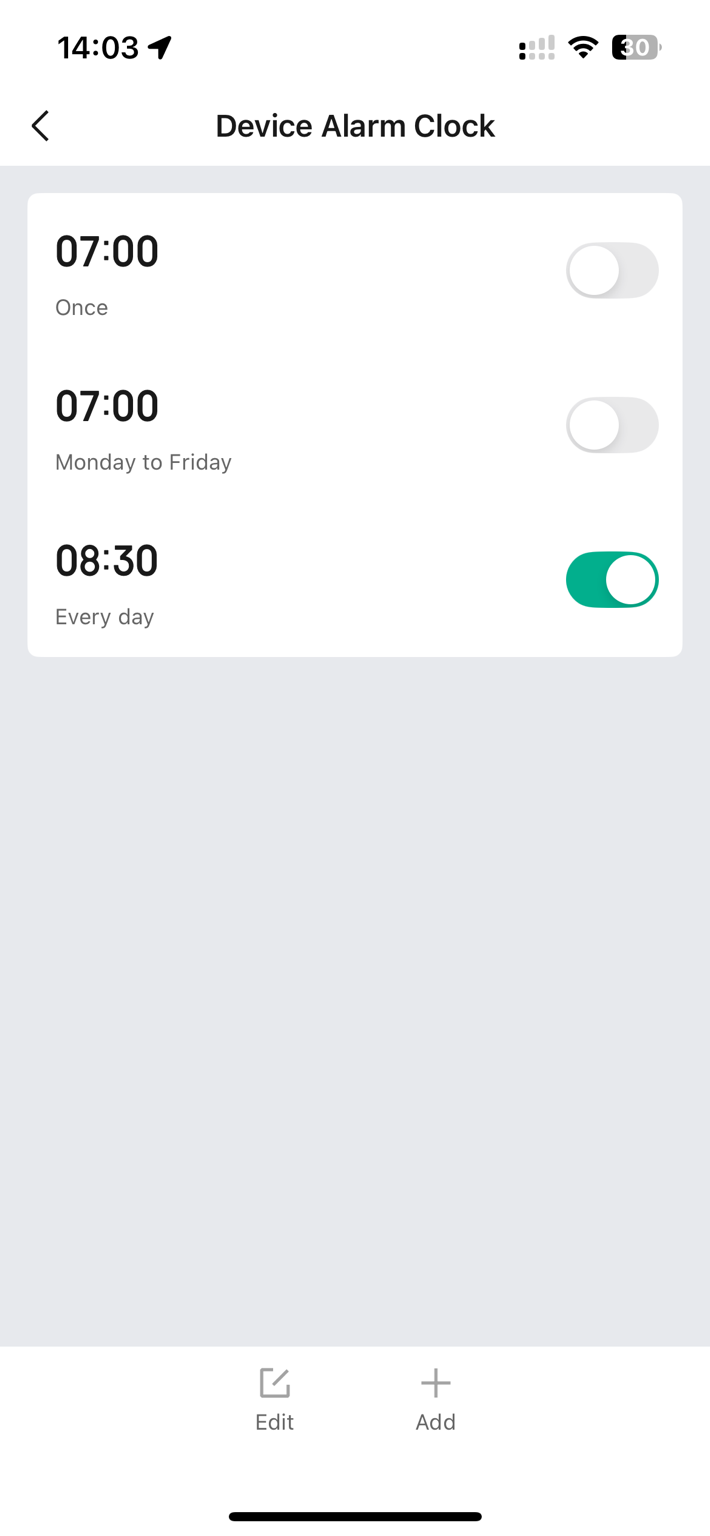
However, we’re probably getting ahead of ourselves, so let’s go back to the main ‘Home’ page, and walk through the stats it gets:
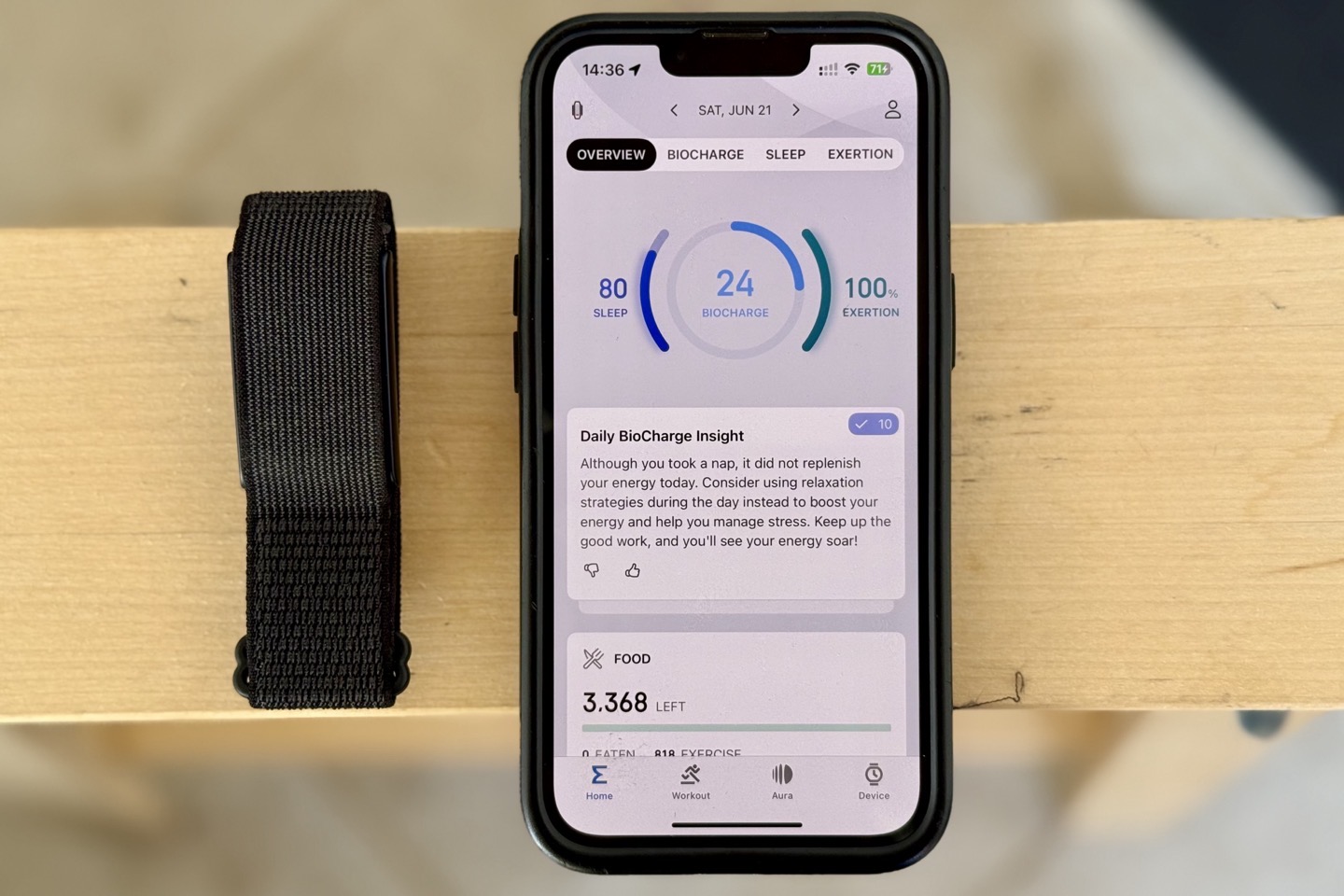
The Helio band gathers, or otherwise records, the following data:
– Heart Rate (24×7, resting, workout)
– Heart Rate Variability
– Sleep metrics (Sleep Times, Sleep Stages/Phases, Sleep Score, and Naps)
– Respiration/Breathing Rate (during sleep)
– Steps
– Calories
– Stress
– PAI
– Biocharge (sorta like Body Battery)
– Exertion (total energy expenditure each day)
– Skin Temperature (except, it’s fiddly on when it works)
– Sleep Apnea estimation (non-medical though)
– Training Status
– Training Load
Notably, within the Amazfit ecosystem, it doesn’t calculate/handle a ‘Readiness’ score, which is something you’d see on some of their other watches. But otherwise, it’s basically everything else you’d get normally.
So, looking at a given day, on the Home Screen (seen above), you’ll see three core things at the top, they are:
– Sleep Score: In my case, this was 80 for Sunday. That seems roughly in line. More on the exact sleep metrics in a moment.
– Biocharge: This is your body battery ending point at the end of the day, though, throughout the day it’ll update it from the starting value when you woke up. This is basically identical to Garmin’s Body Battery.
– Exertion: This is how much activity you’ve done for the day, with the goal being to get to 100%. Though oddly, you can’t get beyond 100%. So…every day I end up at 100% pretty easily.
So, before we talk about how some of this compares to Whoop and what they are doing, let’s briefly look at some sleep stats for fun. Here’s what you’ll see each night (last Wednesday I ran out of wrists for that night and some comparison testing).
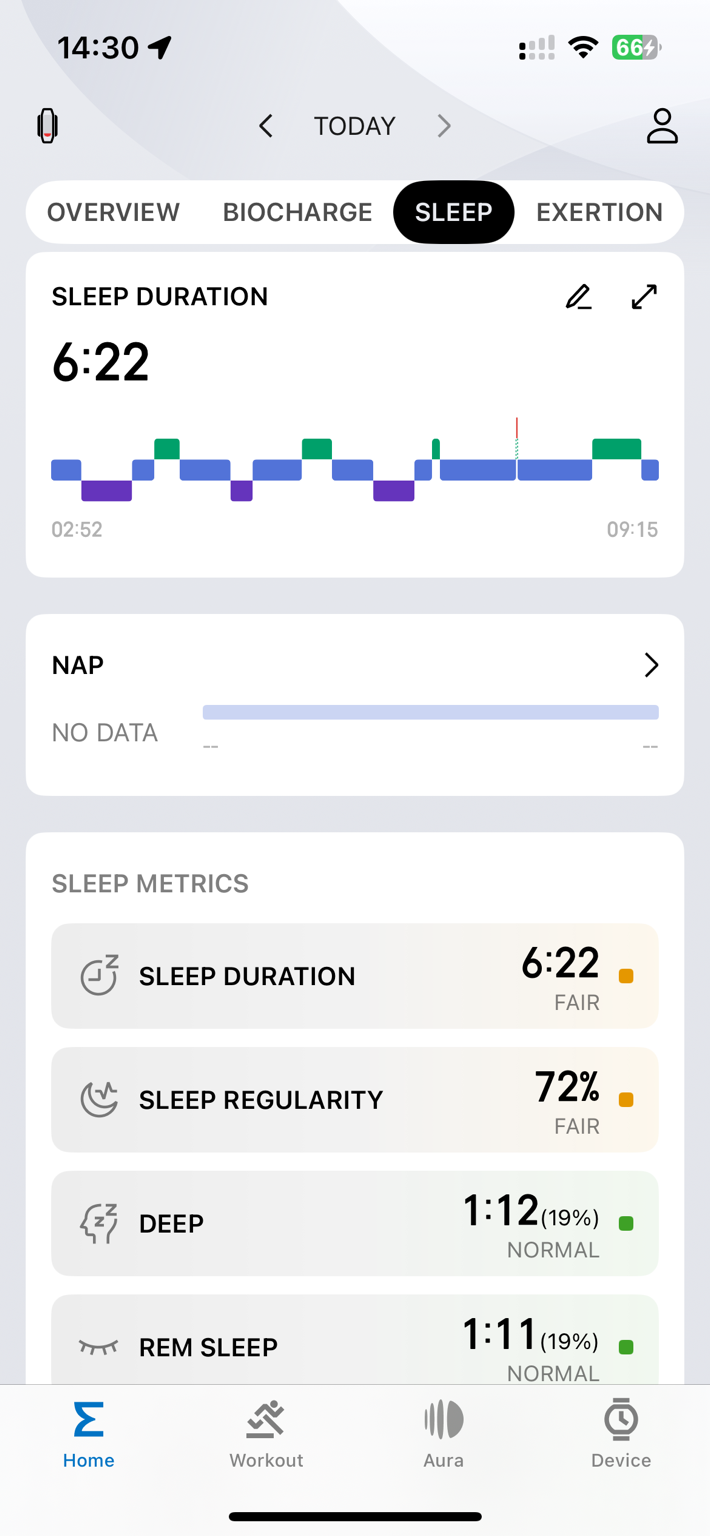
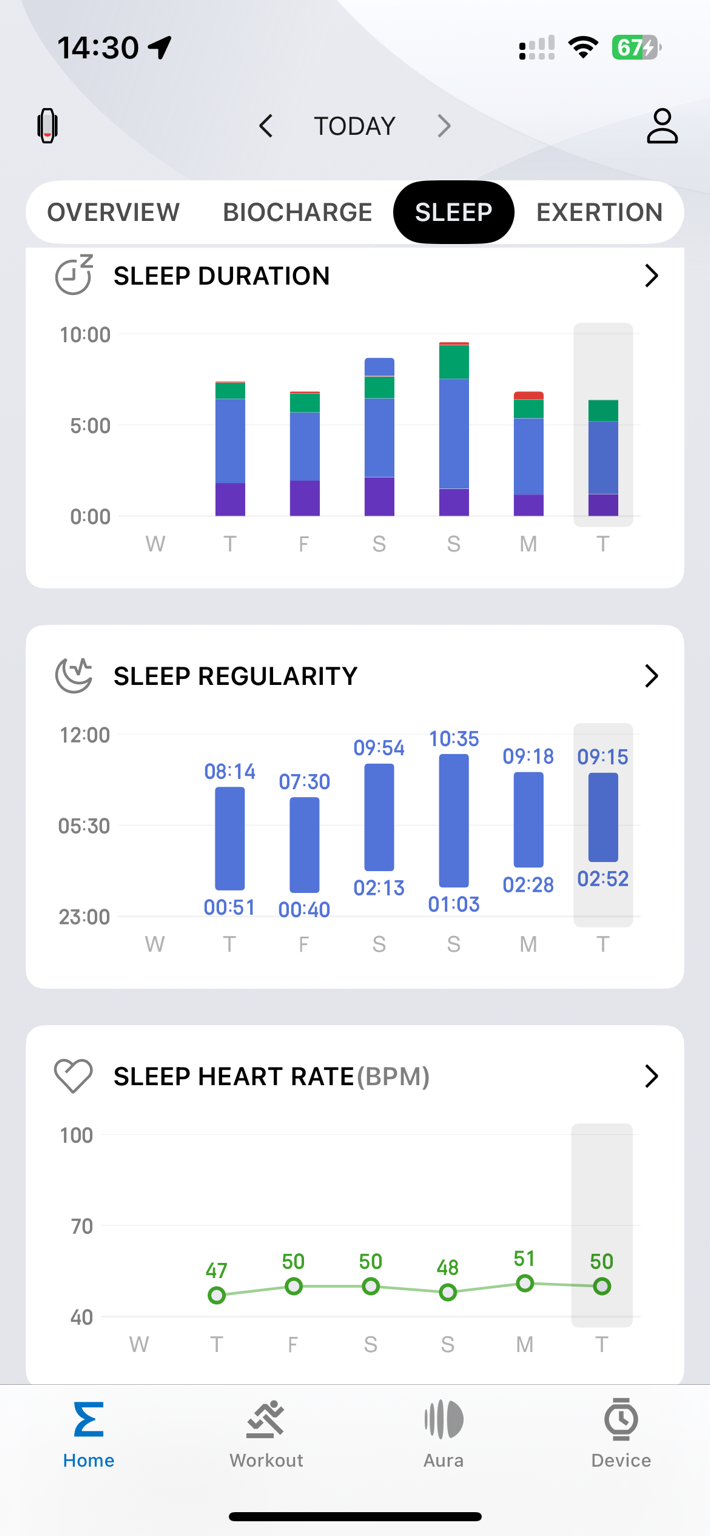
All these stats are basically in line with what we’d see from their competitors, and of course, their other devices.
However, more important is how they compare to reality, and, of course, to other devices in terms of accuracy. Taking a look at last night:
Actual/Reality: Fell Asleep ~3:05AM, Woke up: 9:10AM
Amazfit Helio Band: 2:28AM to 9:18AM
Apple Watch Ultra 2: 3:04AM to 9:10AM
Garmin Index Sleep Monitor: 3:49AM to 9:10AM
Oura Ring V3: 2:58AM to 9:15AM
Whoop MG: 3:02AM to 9:13AM
If we look at a longer sleep period, Sunday night, we see:
Actual/Reality: Fell Asleep ~12:50AM, Woke up: ~10:35
Amazfit Helio Band: 1:03AM to 10:35AM
Apple Watch Ultra 2: 12:49AM to 10:37AM
Garmin Index Sleep Monitor: 12:52AM to 10:52AM
Oura Ring V3: 12:49AM to 10:36AM
Whoop MG: 12:53AM to 10:32AM
In general, looking at stats over the last few weeks, the Helio tends to be pretty close most nights, enough that it’s in line with others in most cases.
If we look at HRV values from devices from last night, for example, we see:
Amazfit Helio Band: 56ms
Garmin Index Sleep Monitor: 55ms
Oura Ring V3: 56ms
Whoop MG: 54ms
Note that Apple uses a different scale for HRV than the rest of the companies, hence it is not included in the above comparison.
And if we look at Sleep Scores for last night, we get:
Amazfit Helio Band: 78%
Garmin Index Sleep Monitor: 69%
Oura Ring V3: 62%
Whoop MG: 74%
Looking at last night, I’d say AmazFit’s being a bit generous on that sleep score with barely 6 hours of sleep, and the others are more in line with reality.
Ok, with sleep behind us, let’s talk about Biocharge, which is the main metric they stick in the center of their app. If you’re familiar with Garmin’s Body Battery, this is essentially the same thing. Each night when you sleep, it’ll charge back up again (to what level depends on how much you sleep), and then throughout the day it’ll decline, depending on how much activity, workouts, or stress you have. You can increase it again with naps. You can see this ebb and flow below:
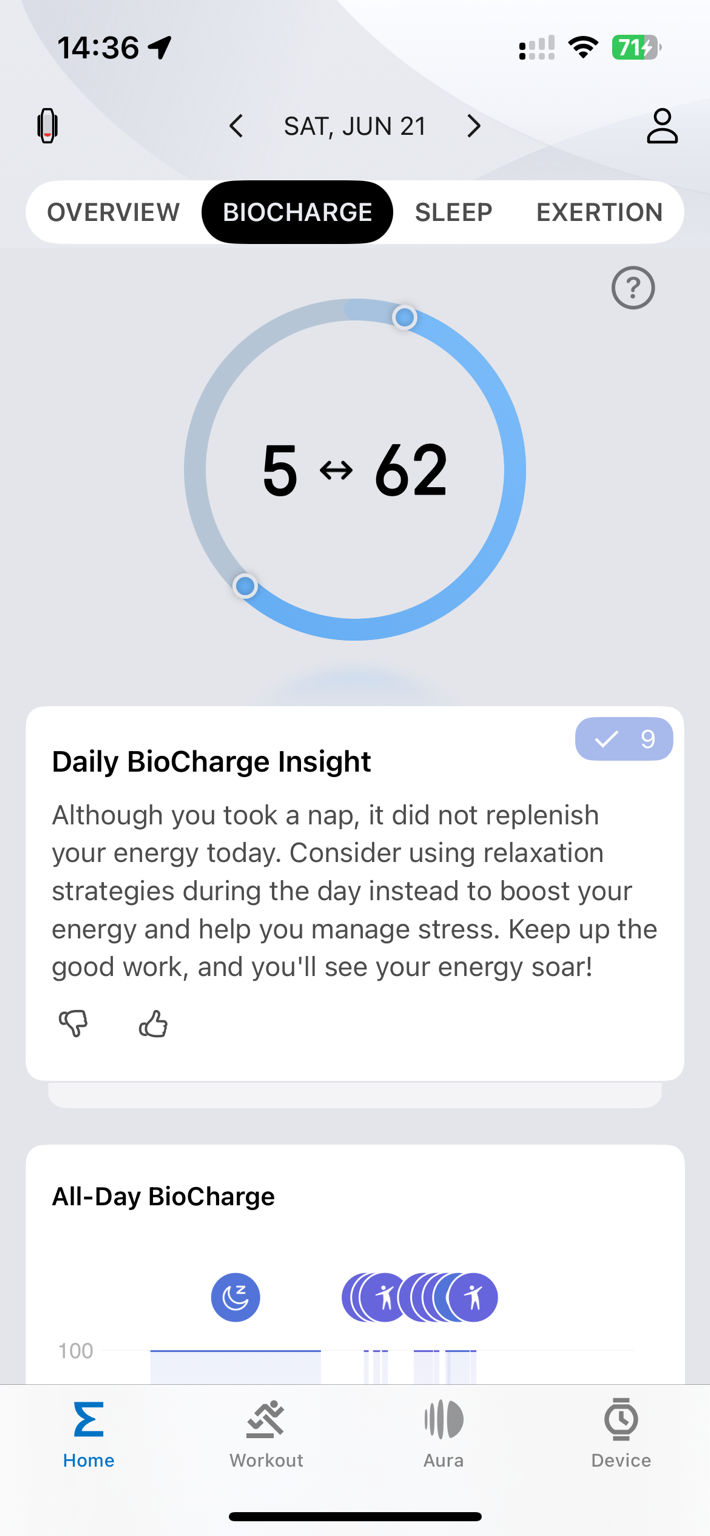
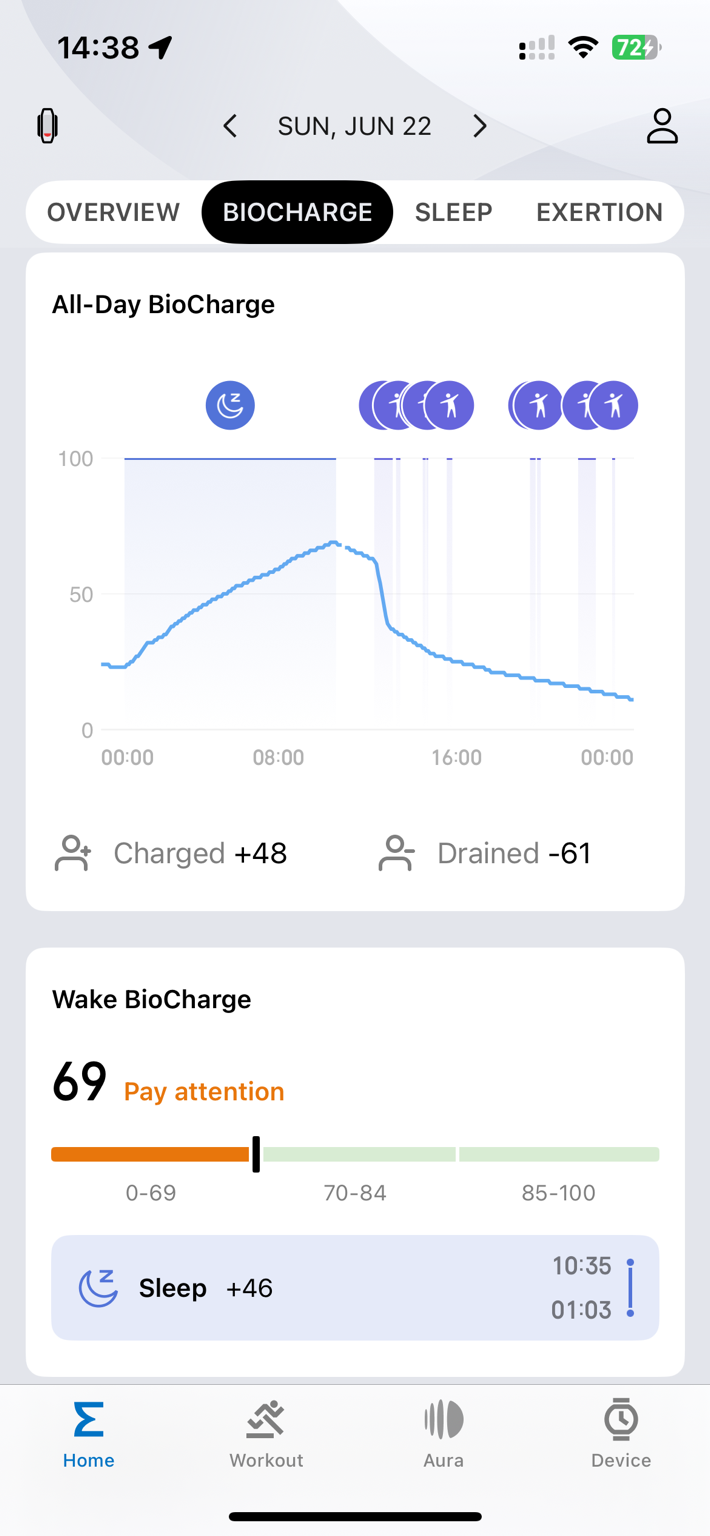
And from a structure standpoint, this all works reasonably well, and I don’t have any meaningful issues here. However, this isn’t the same as what Whoop does, and so let’s briefly cover Exertion, and then explain how this all differs.
Lastly is Exertion, which is basically how much activity you’ve done that day. As I’ve noted earlier, this tops out at 100%, and there isn’t a way to go beyond 100%. That’s a bit silly, since I can do a ton more activity one day than another day, and they both equal the same total exertion. Further, the totals directly below it clearly shows me going beyond 100%.
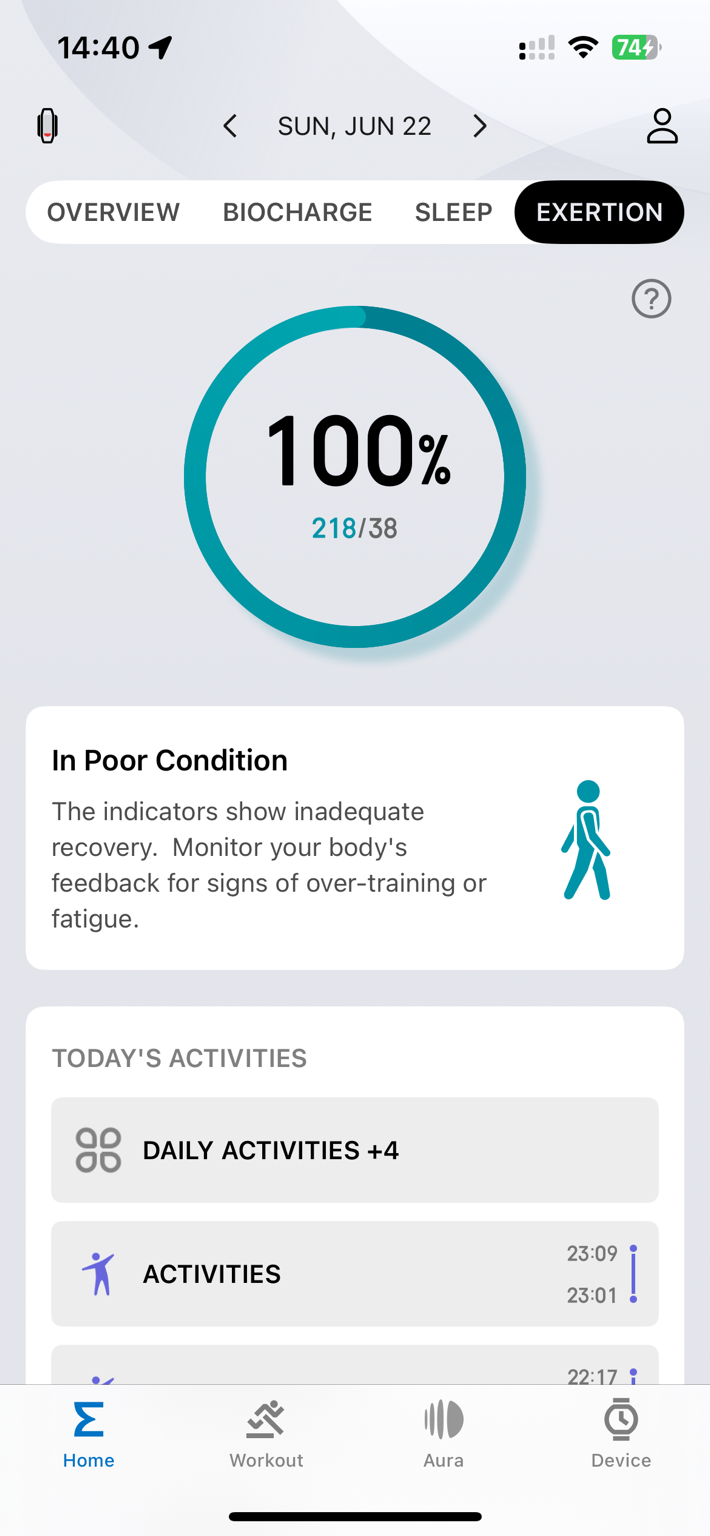
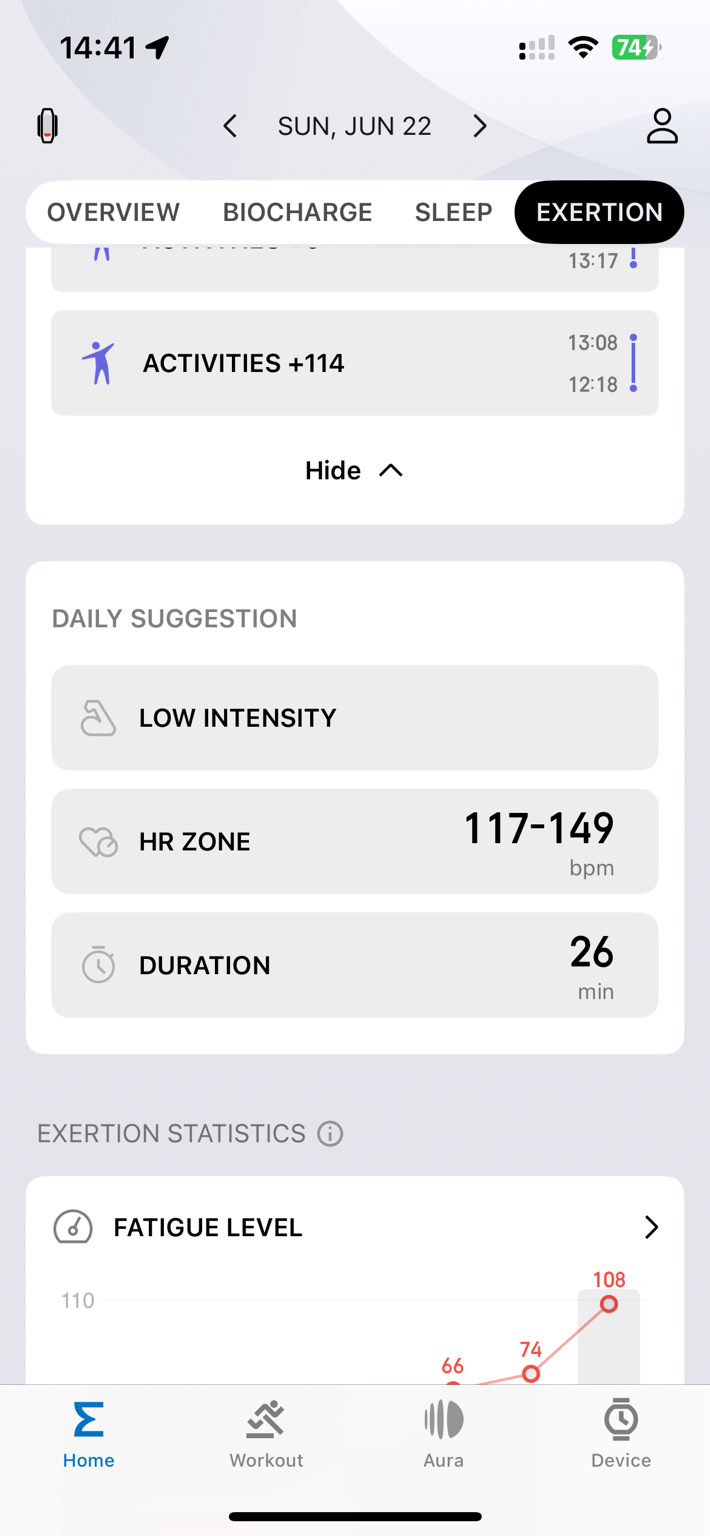
In the case of Amazfit, your exertion score is essentially just the sum total of the time it assigns to activities, and as we’ll see in a second, what it assigns to activities is pretty…umm…robust (read: not right).
However, now is a good time to cover a core difference between Amazfit and Whoop. Amazfit is basically focused heavily on giving you the BioCharge (energy level) and Exertion (activity quality) metrics, whereas Whoop is heavily focused on giving you total training load (Strain) and Recovery metrics. Both companies also have sleep included. You can see these shown at the top of each app:
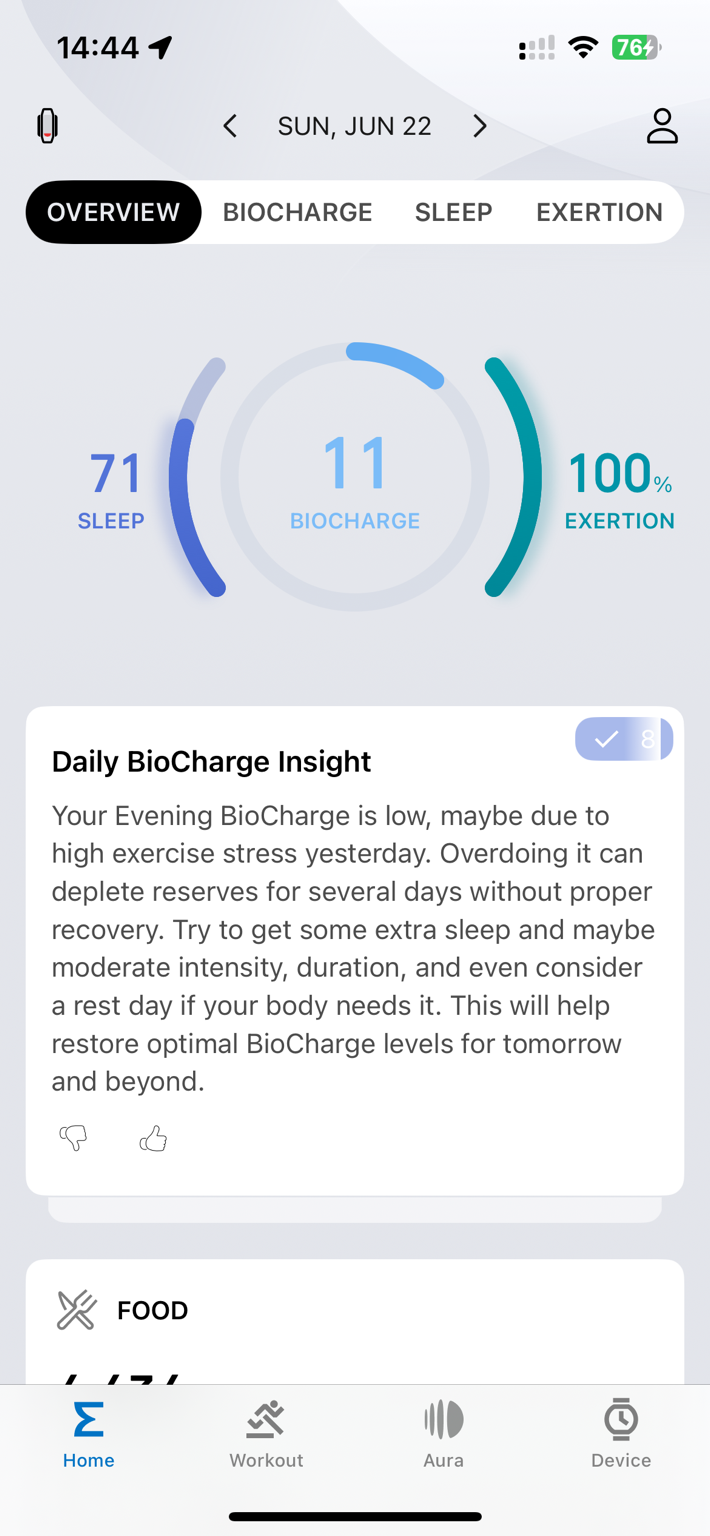
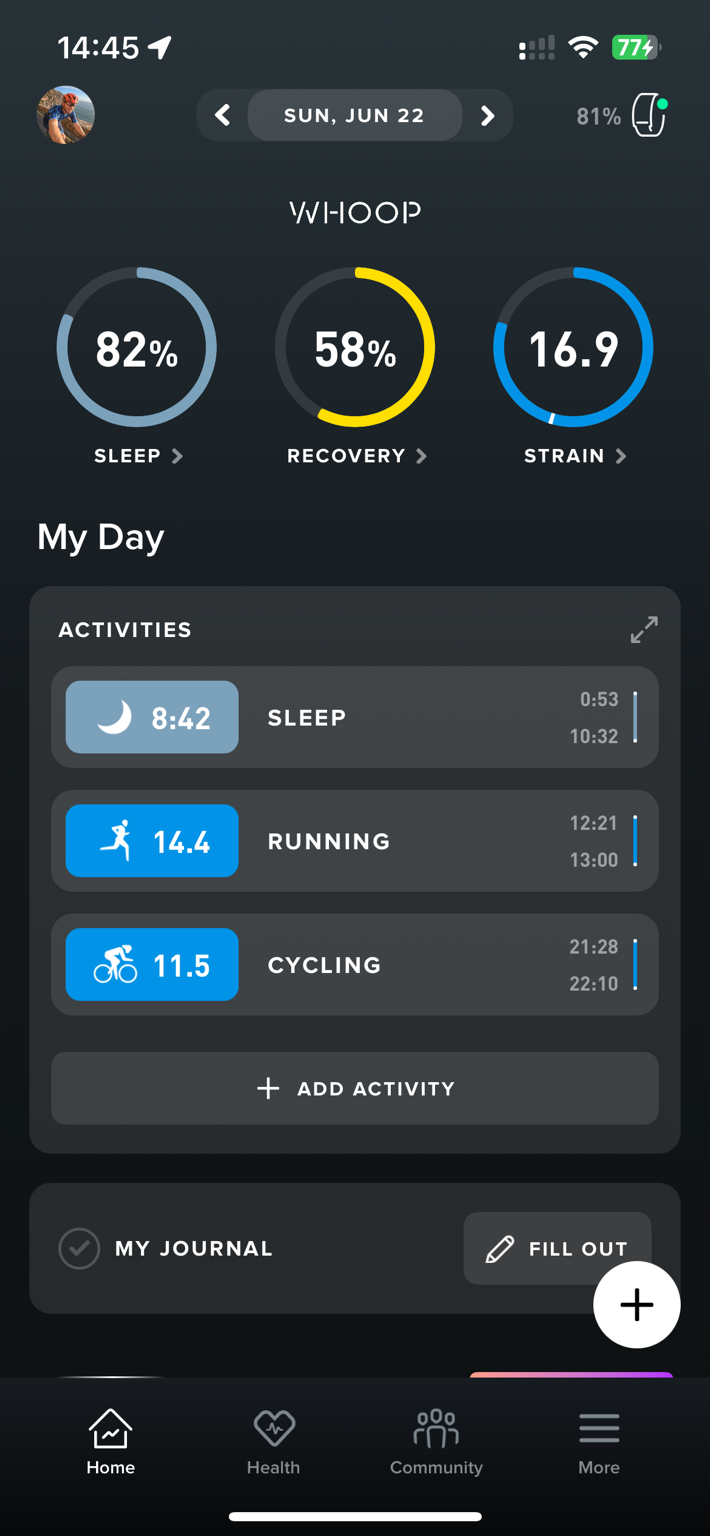
While Amazfit has Training Status stats (see the next section), they aren’t the centerpiece of the Helio band. They appear more like an afterthought, at least relative to Helio and the Zepp homepage. I’m not saying they aren’t valid, but simply that *everything* in Whoop is about Strain and Recovery. EVERYTHING. Whereas here, Helio seems more aligned to an activity tracker than a sports training tracker. At least in how it drives/bubbles that information up.
Which is a good time to move into the next section.
Workout Usage:
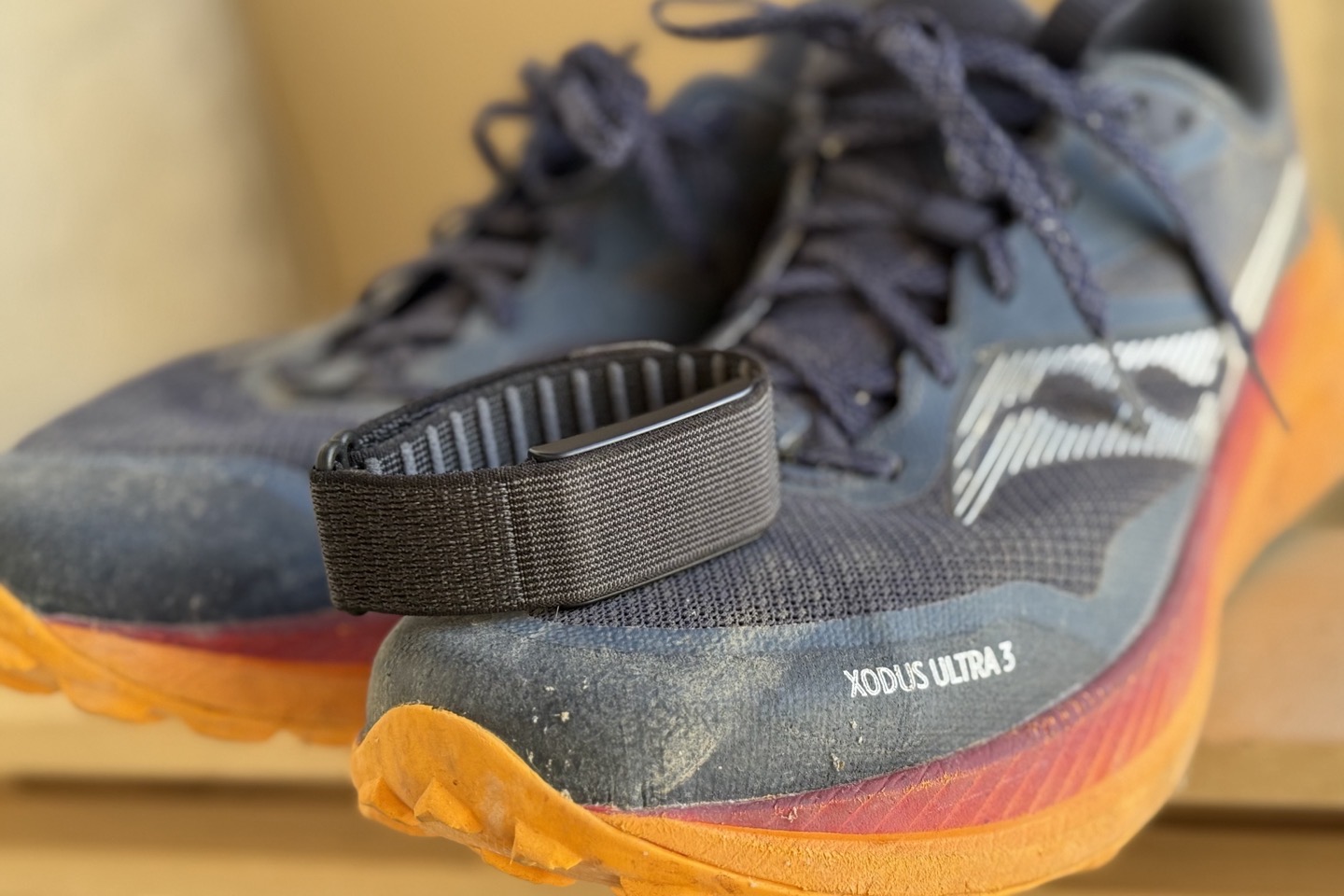
There are two core ways to record workouts with the Amazfit Helio. The default method is automatic workout recognition, which will automatically detect workouts and create workout/activity files within the Zepp app for each of your workouts. This matches what Whoop does, and is arguably the most critical part of Whoop’s success.
Here, we can see within the Zepp app, how you can configure this (including turning this off):
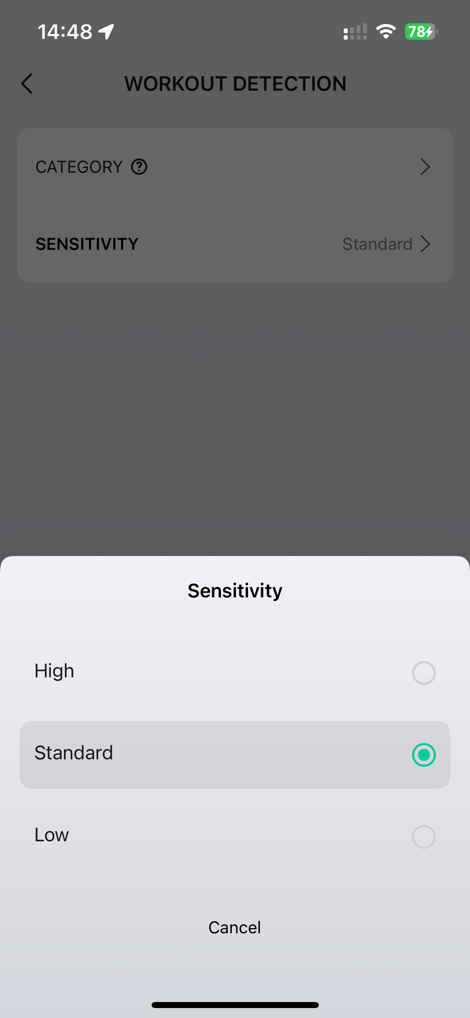
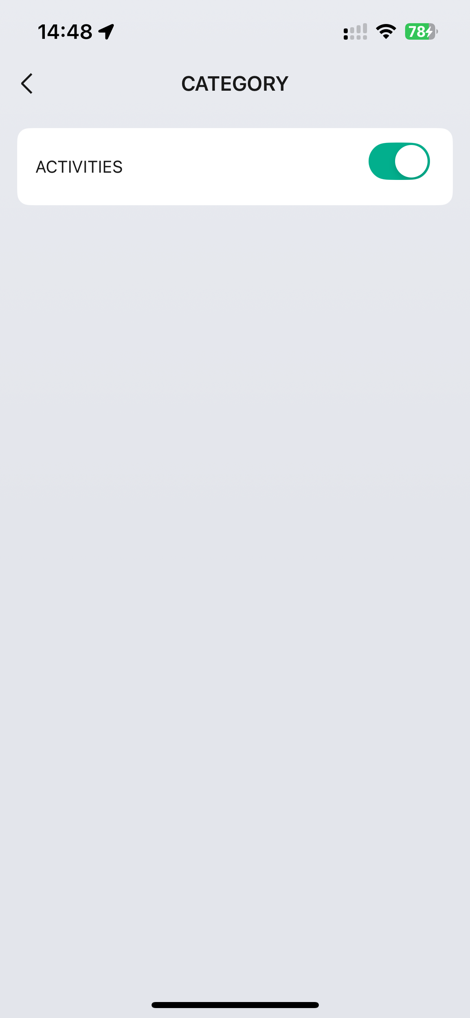
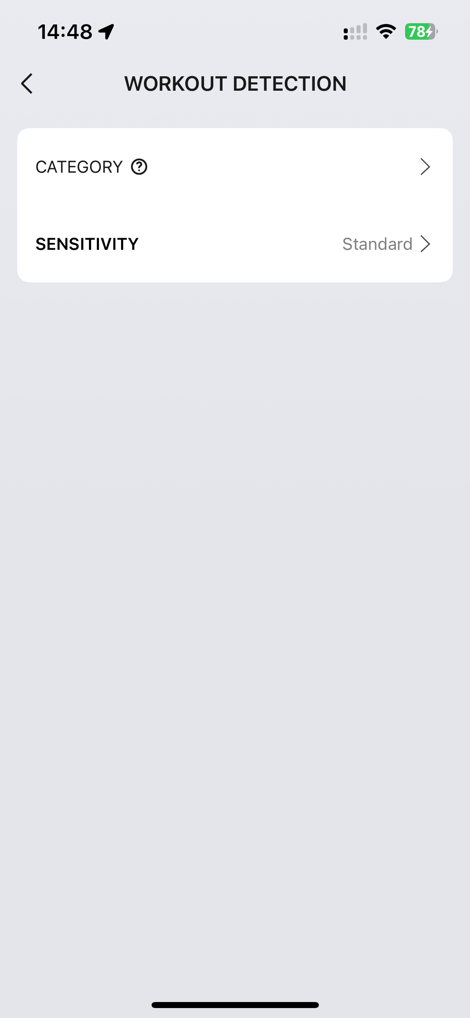
However, this immediately segues into the single biggest problem with the Amazfit Helio band: It’s horrific at this.
More specifically, it’s horrific at creating endless activities that didn’t exist. Now, to its credit, it’s never missed a workout of mine, but equally, each day is littered with countless numbers of workouts that didn’t exist. Sunday apparently had 10 workouts (I only did 2, a bike and a run). Saturday had 7 workouts (I actually did none).
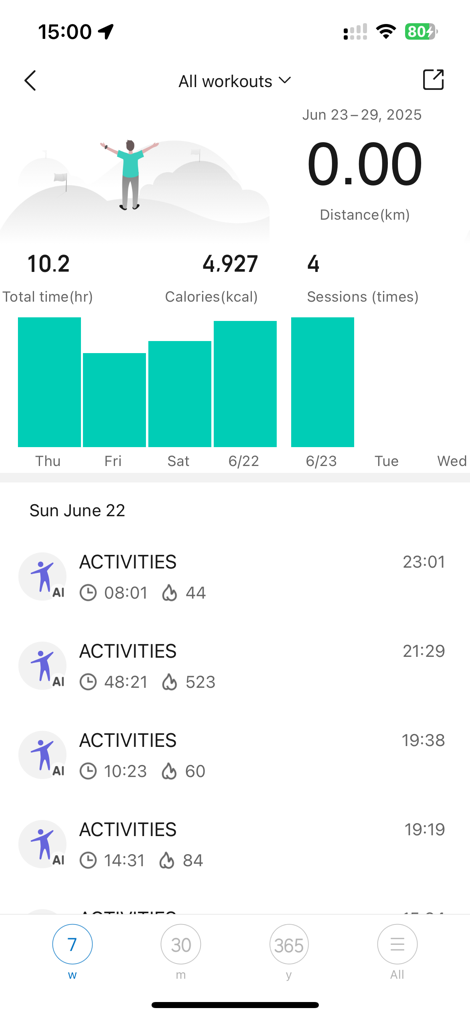
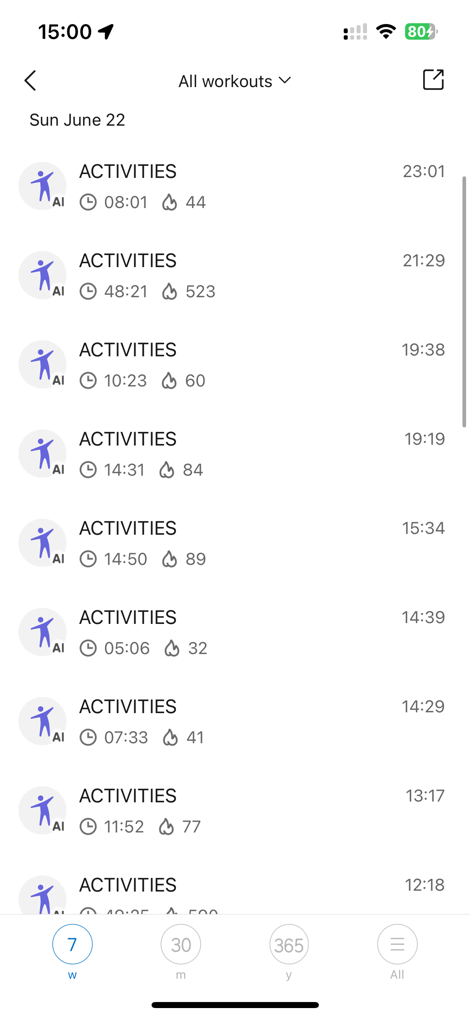
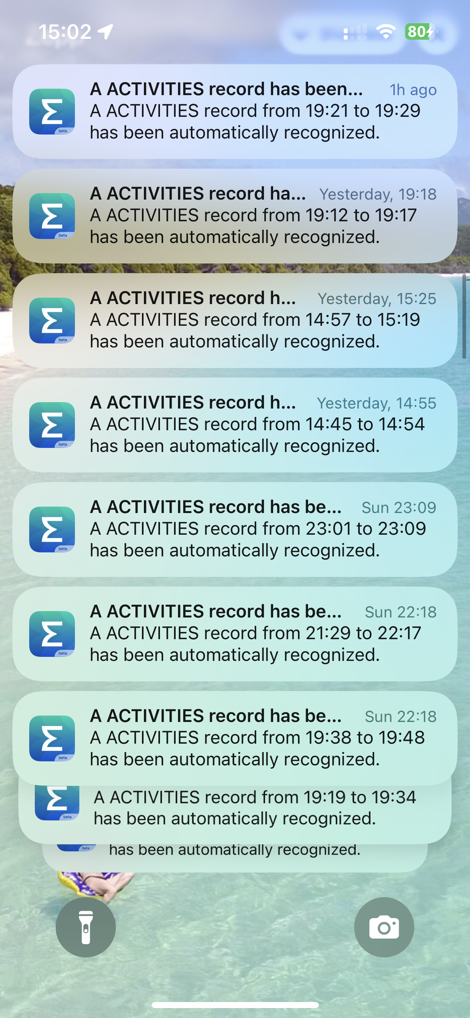
The problem with this is that it basically floods the app, and your notification center, with ‘A Activities’. Even worse, it does it at totally random times. For example, in the Notification Center above, at the top right you can see it just gave me a notification for an activity that happened yesterday. Usually they’re clustered right after the activity, but many times I’ll get them many hours later (or a day later in this case).
Meanwhile, for competitive context, for all the things we can complain about on Whoop, I virtually *never* get unexplainable automatic activities. Sure, I might get a bunch of sweat-inducing yardwork categorized funny, but I’m OK with that, because I was actually doing something. Here, I’m just…well…doing nothing, and it spits out activities.
And that then gets to another key difference to Whoop: Whoop is focused entirely on what your heart rate is doing 24×7. Whether or not it/you properly categorize your activities is irrelevant to that. If your heart rate is high, it gets added to strain and thus impacts your day (and eventually downstream, your recovery score). Versus with Amazfit, if your heart rate is high…well…it’s just high. It’s not really being computed against they key metrics correctly.
Let’s take a look at Sunday, which had both a 30-minute trail run at noon (incorrectly assigned 48 minutes), and then a 40-minute trainer ride at ~10PM (assigned 49 minutes). Here are those activities, and most critically, how they impact the Biocharge:
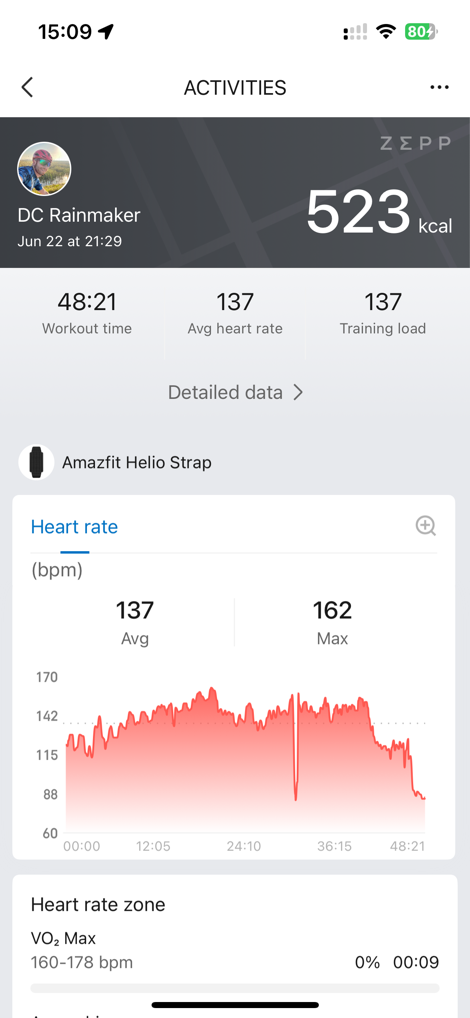
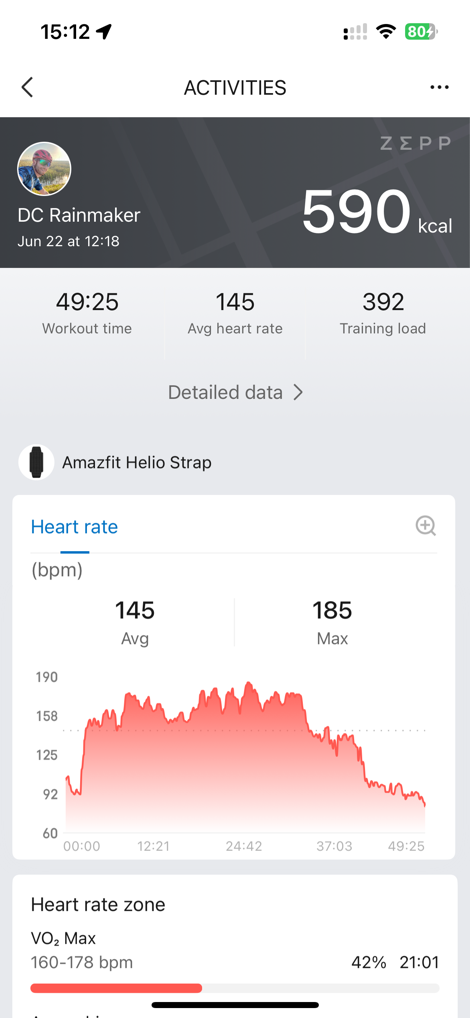
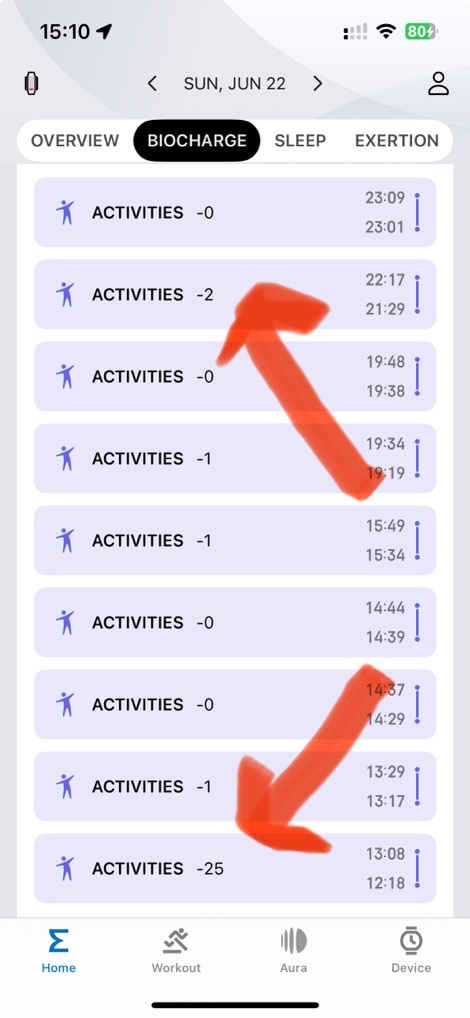
There are so many things wrong here in terms of how the dots connect, it’s mind-boggling. Setting aside that weird heart rate strap in the middle of the run, let’s look at the following issues:
#1: Why does the run have a Biocharge impact of -25, but the trainer ride only impact it -2?
#2: After all, both are very close in terms of calories (523 vs 590kcal)
#3: Both are relatively close in terms of average heart rate (137bpm vs 145bpm)
#4: Yet the trainer ride supposedly had a training load of 392, versus 137 for the run!?!
None of this adds up. Like, literally, it factually doesn’t add up mathematically. There’s no scenario here where the trainer ride should have been only “-2”, and the run “-25”. In every category of the trainer ride, it was more impactful.
And this gets to the most critical difference with Whoop: Whoop’s total strain is cumulative, at least up till 22 (we won’t get into the stupid of Whoop’s max 22 score, that’s been debated for years, and is a hill they want to die on). Nonetheless, with Amazfit putting their eggs in the Biocharge basket, it kinda falls apart. One could also try and assign this to Exertion, but that’s equally as messy, due to the random 100% cap and things just piling up by the hundred there each day:
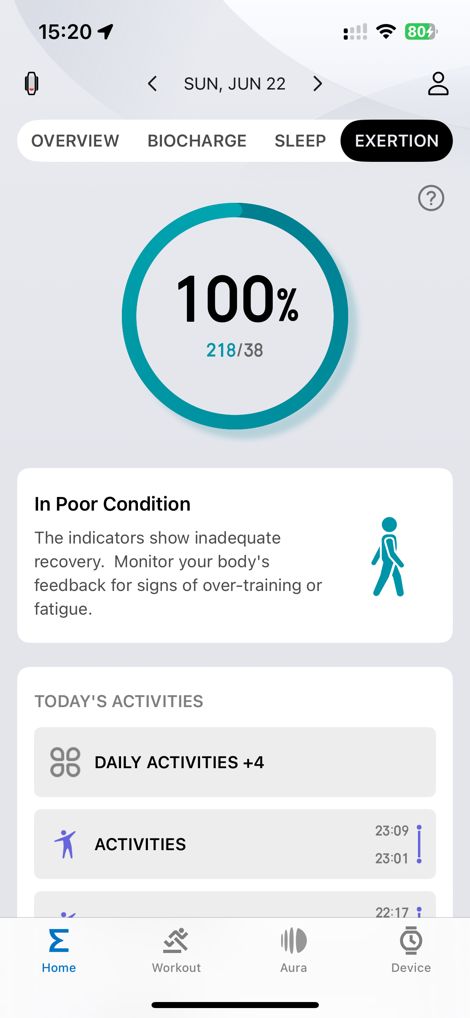
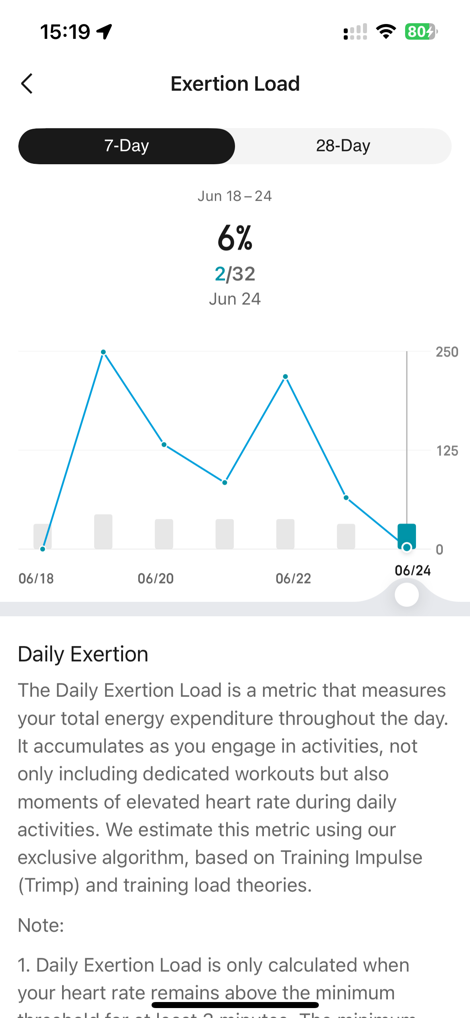
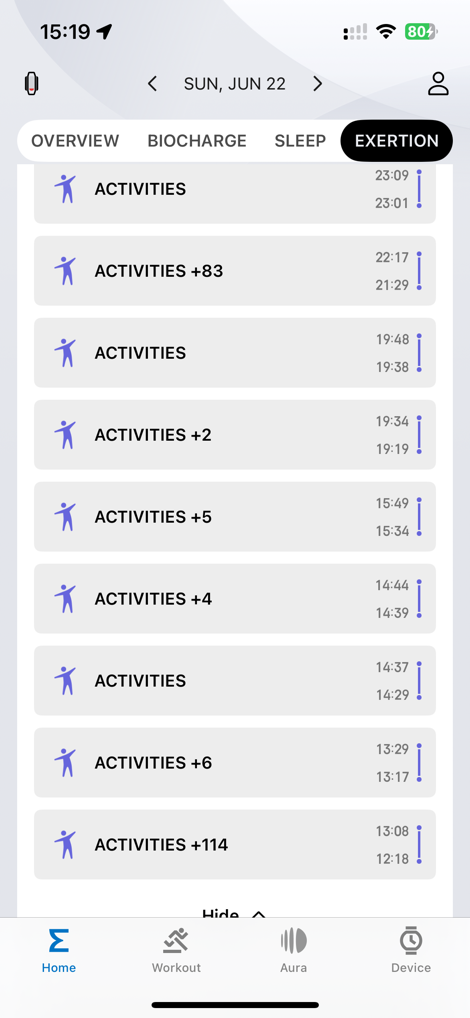
Now, the good news is that if you ignore all the main things in the Amazfit app, they still have Training Effect, and Training Status.
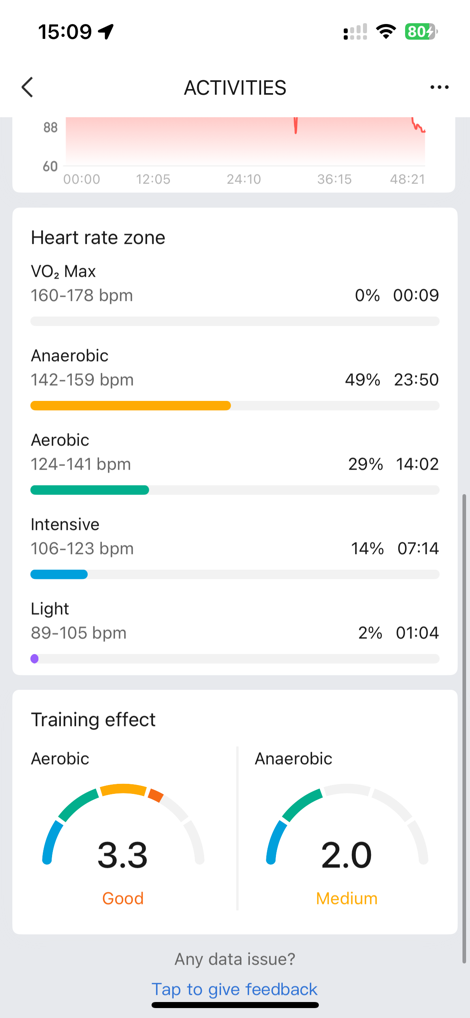
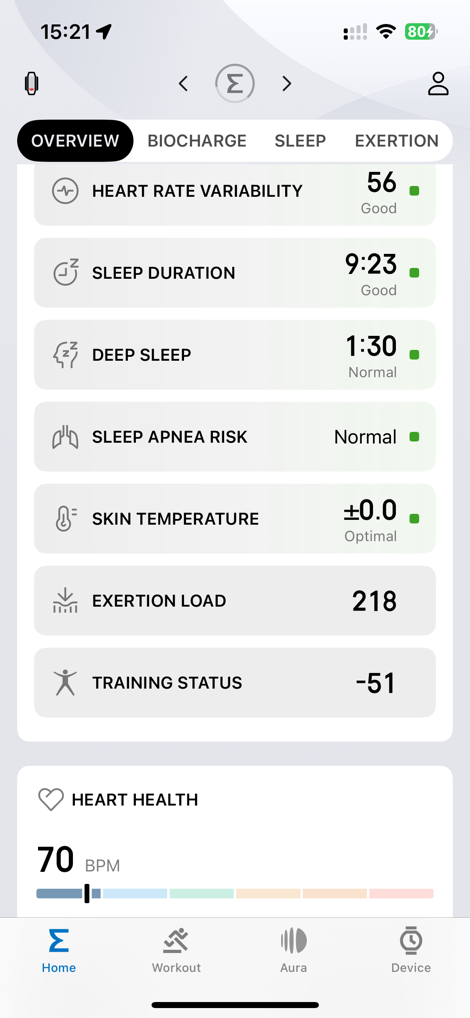
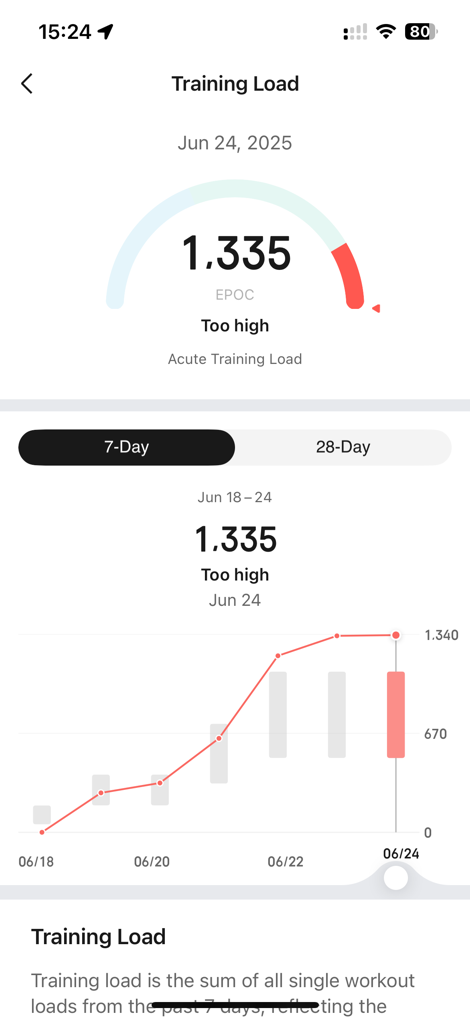
Now in terms of that automatic activity detection, you could turn that off and only do manual workout starting/stopping, which would solve the duplicates issue.
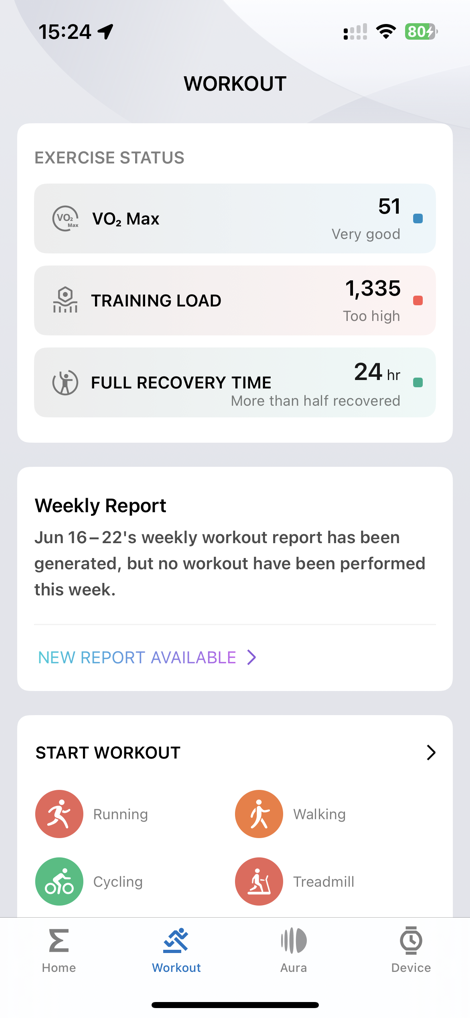
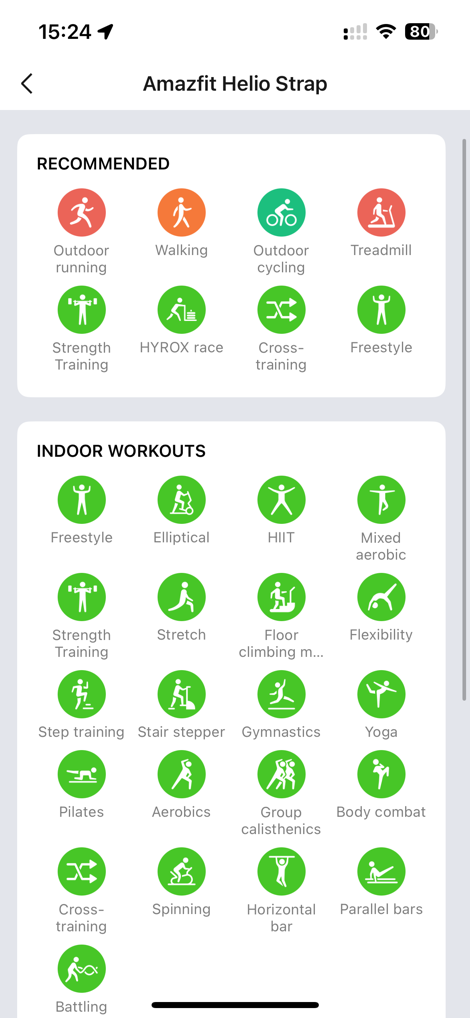
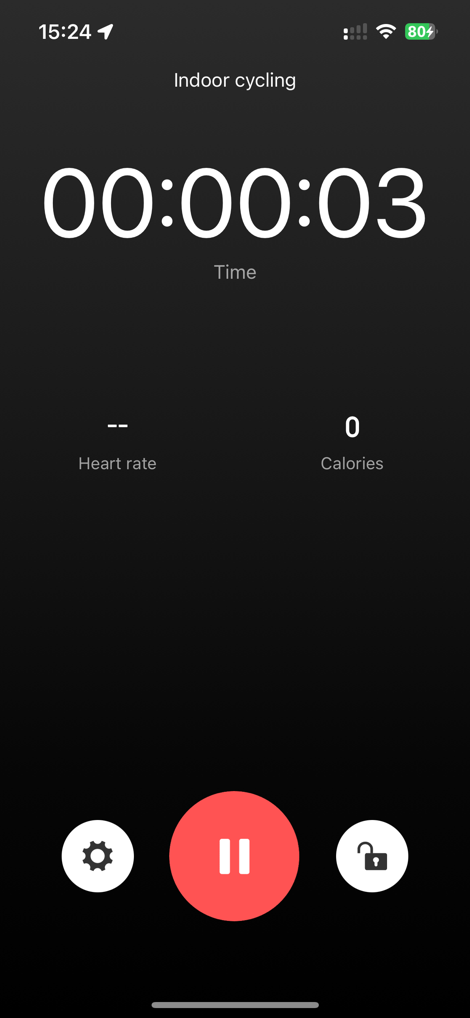
Though, I don’t know why sometimes when I do manually-started workouts, it’ll show null (zero) heart rate (like seen above). Restarting the app usually fixes the problem.
Heart Rate Accuracy:
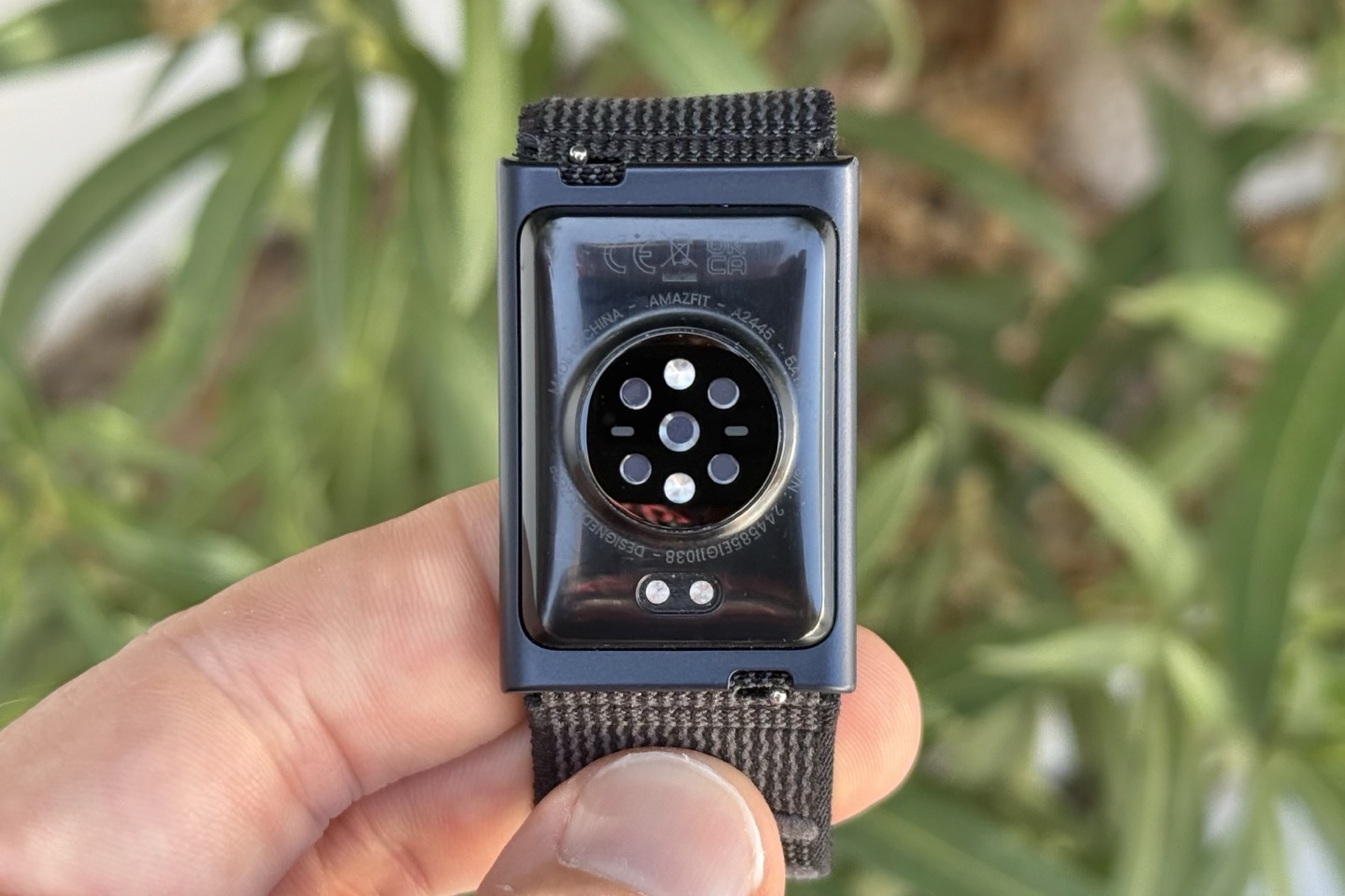
Overall, I’ve been super impressed with the heart rate accuracy during workouts, actually beating some other devices in the accuracy department. Let’s look at three workouts for the moment, but I’ll pull more into here when I finish up my review video (for YouTube).
First up is an outdoor run I did. This was a trail run with some steep downhill sections as well as uphill sections. This is notable because many optical HR sensors struggle on steep (and fast) downhill sections, but this nailed it. Kudos!

Next, an outdoor ride. Again, an area that many optical HR sensors struggle with, and this one nailed this 2-hour 30-minute ride without any issues. In fact, as you can see, it easily beat the Garmin Venu X1, which had the worst day of its life. Note that the Helio file got split into two pieces, because automatic workout recognition decided I had stopped for too long (literally just ran inside a tiny cafe and ran back out again). The Wahoo ROAM file is the Garmin HRM-600 chest strap.
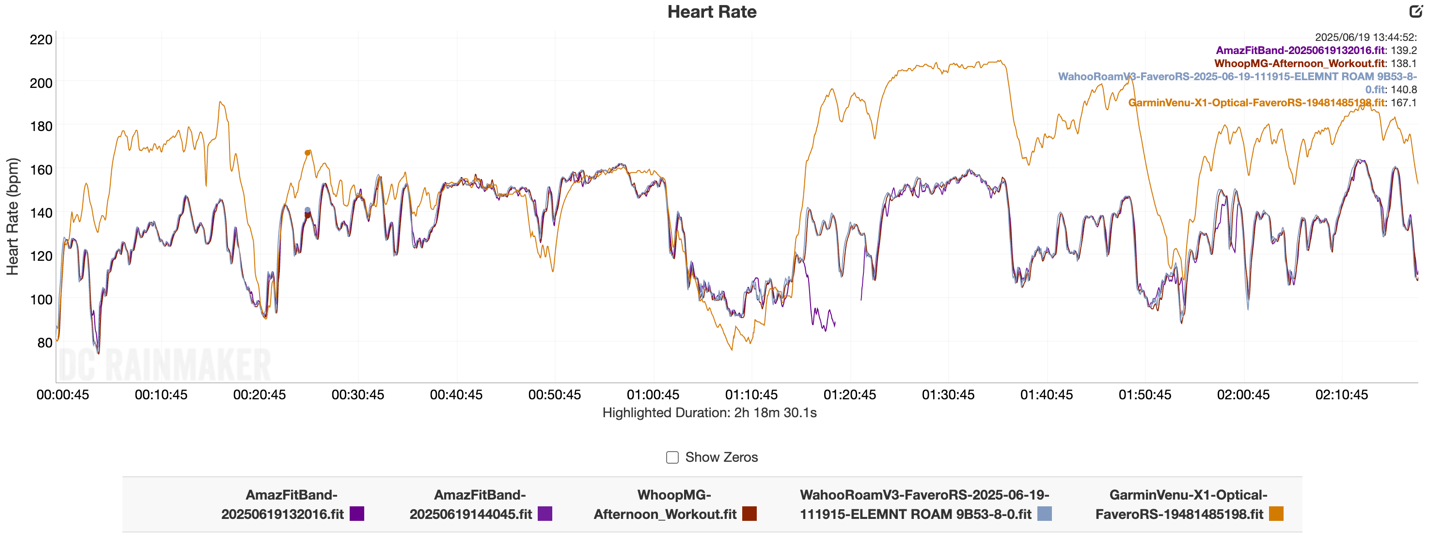
And then we’ve got this indoor trainer ride, which again, was spot-on here. Really happy with the results I’m seeing:
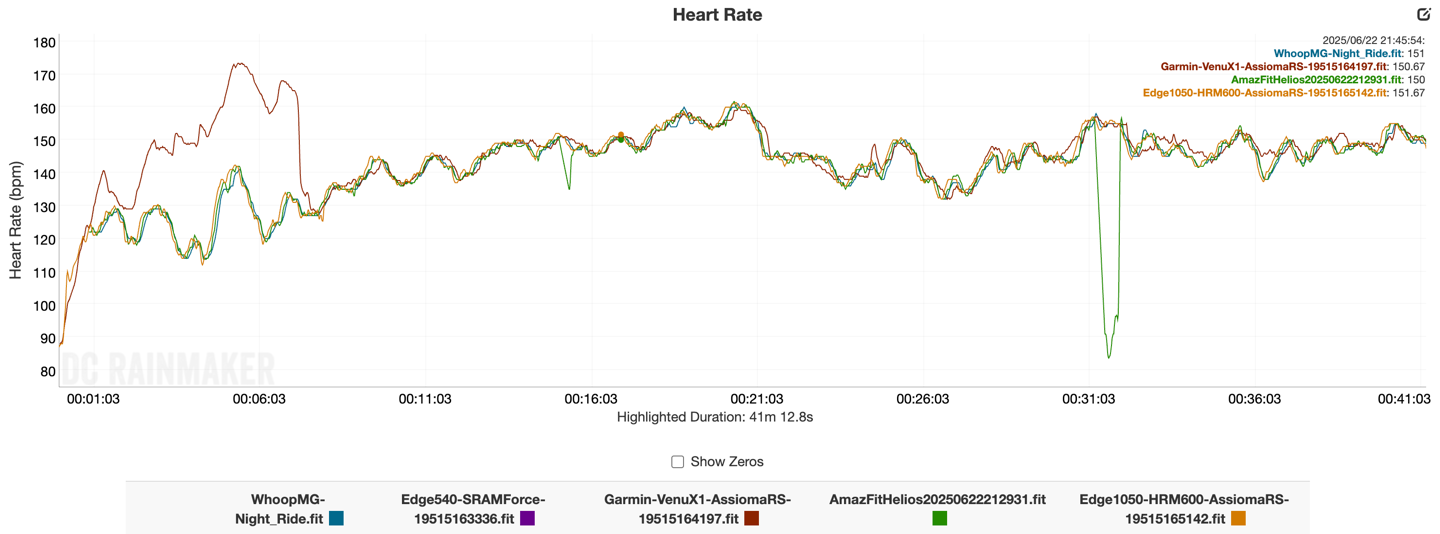
(Note: That dropout you see at 31-minutes was…umm…when I went to adjust it while riding, and managed to accidentally undo the strap and had to put it back on. Sigh. So, not its fault.)
Again, I’ve got more data to pull in from the last 2-3 weeks, but all of it is basically identical to what we’re seeing above here. And more critically, the above workouts were actually some of the more ‘challenging’ ones in terms of optical HR sensor conditions. While not the hardest/longest workouts I’ve done with the Helio, they were the ones that make optical HR sensors struggle a bit – and it did perfectly fine.
I suspect part of the reason it did so well is simply the super lightweight design, alongside the snug wristband. Both of those things are key factors when it comes to optical HR sensors, because it reduces bounce of the sensor pod. When an optical HR sensor pod bounces, it tends to struggle with accuracy.
Wrap-Up:
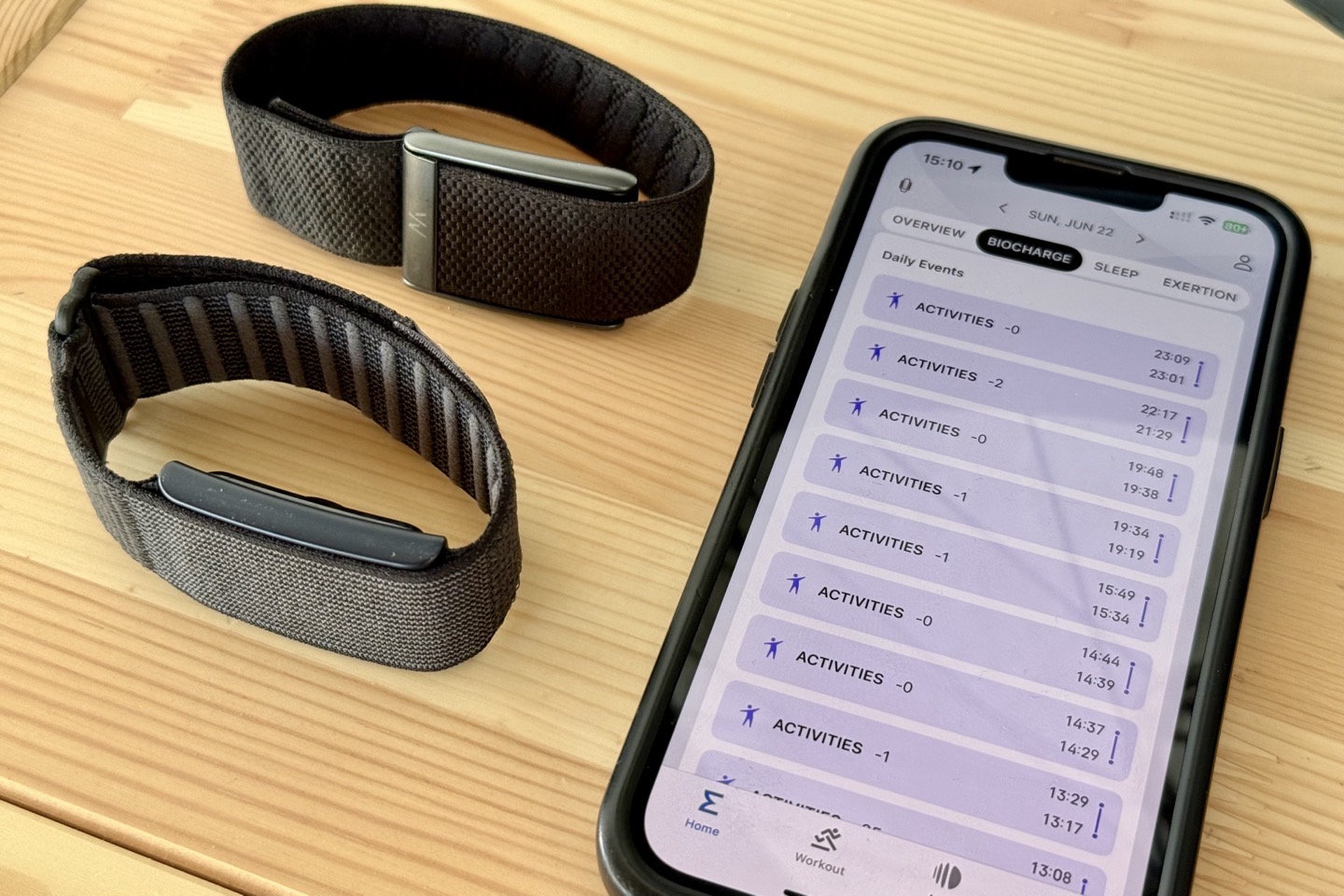
Ok, so where do we stand?
Well, it’s kinda complicated. On one hand, the headliner aspect here is just $99 and no subscription. And certainly in comparison to Whoop’s ever-ballooning subscription fees, that’s super appealing. And notably, the base hardware here is well done, with strong battery life. Sure, it’s missing an armband/bicep band option, but that sounds like it’s on the way for July.
The challenge isn’t the cost (or a subscription fee), the hardware, or even the accuracy.
Instead, the challenge is that this isn’t really a Whoop Killer, or even entirely a direct Whoop competitor. At least, not today. This is much more akin to a Fitbit Charge 6 competitor than a Whoop platform competitor. Sure, the Fitbit Charge 6 has a screen and the Amazfit Helio doesn’t. And as such, the Helio obviously gets better battery life (and, even better optical HR accuracy). But every core feature of the Amazfit is seemingly targeted more at daily fitness than it is workouts and training load
Which might be a weird thing to say since the Amazfit Helio has those features, but notably, doesn’t drive you towards them. Or at least, do them in a front and center way. Instead, everything on the main dashboard page of the Amazfit Helio is about sleep, general/total activity levels (Exertion), and general energy levels (Biocharge). That’s a core difference from the Whoop mantra which is ‘Strain’ (load) and ‘Recovery’. Whereas Amazfit mostly hides their training load/status pieces much more deeply, and as I showed in the sport comparison section, has some serious double-take moments on how they arrive at their totals.
Still, if you’re looking for something that has more sports focus than a Fitbit Charge 6, but equally don’t want to pay for the Whoop subscription cost, this is probably a reasonably good middle ground. And at the very least, it’s an inexpensive middle ground with good heart rate accuracy.
With that – thanks for reading!
Found This Post Useful? Support The Site!
Hopefully you found this review/post useful. At the end of the day, I’m an athlete just like you looking for the most detail possible on a new purchase – so my review is written from the standpoint of how I used the device. The reviews generally take a lot of hours to put together, so it’s a fair bit of work (and labor of love). As you probably noticed by looking below, I also take time to answer all the questions posted in the comments – and there’s quite a bit of detail in there as well.
If you're shopping for the Amazfit Helio Band or any other accessory items, please consider using the affiliate links below! As an Amazon Associate I earn from qualifying purchases. It doesn’t cost you anything extra, but your purchases help support this website a lot.
And of course – you can always sign-up to be a DCR Supporter! That gets you an ad-free DCR, access to the DCR Shed Talkin' video series packed with behind the scenes tidbits...and it also makes you awesome. And being awesome is what it’s all about!
Thanks for reading! And as always, feel free to post comments or questions in the comments section below, I’ll be happy to try and answer them as quickly as possible. And lastly, if you felt this review was useful – I always appreciate feedback in the comments below. Thanks!


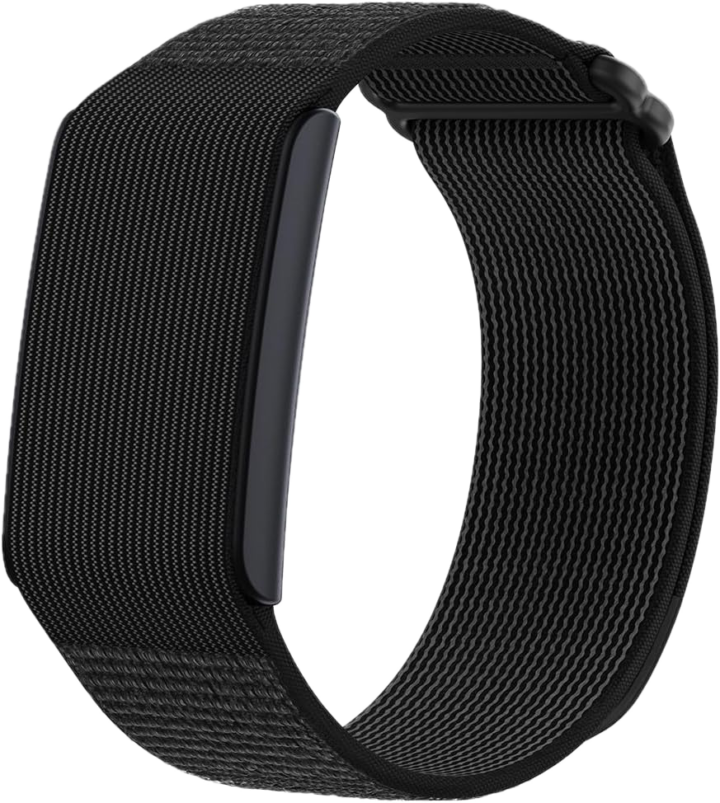
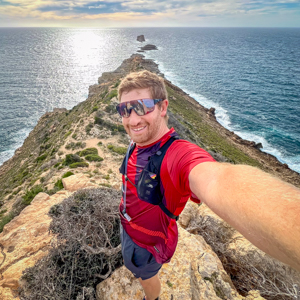





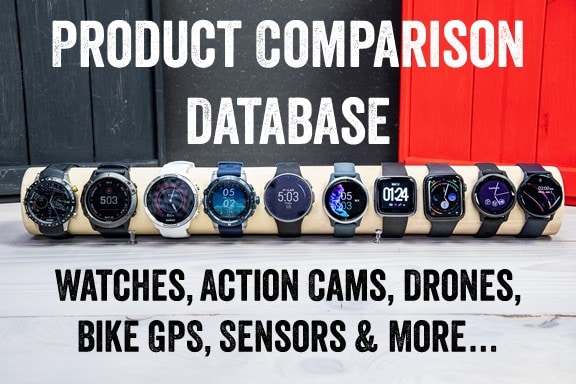
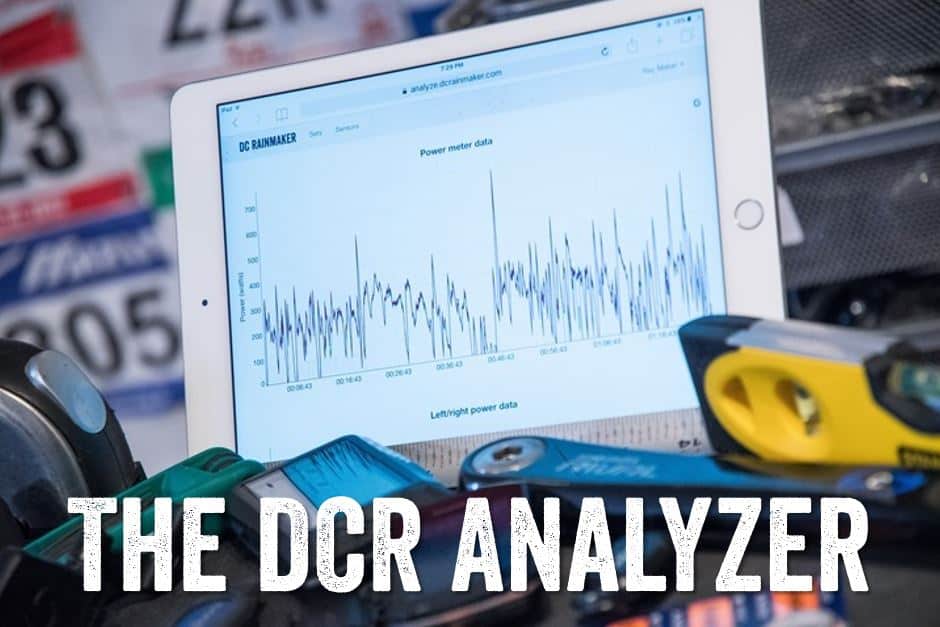
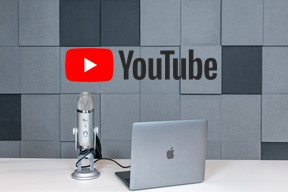
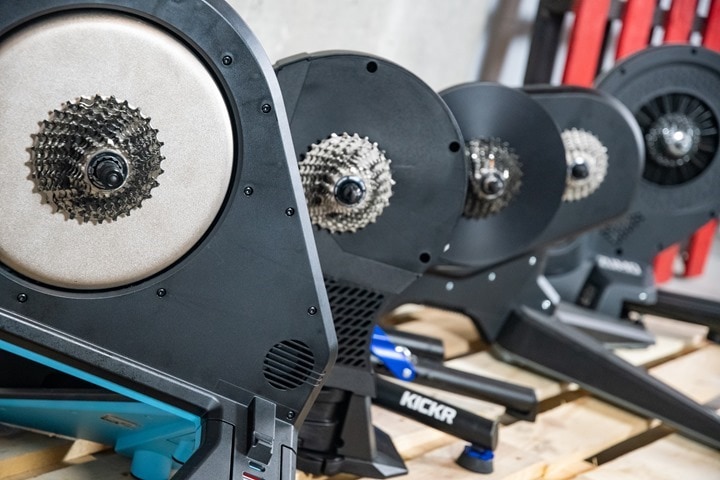
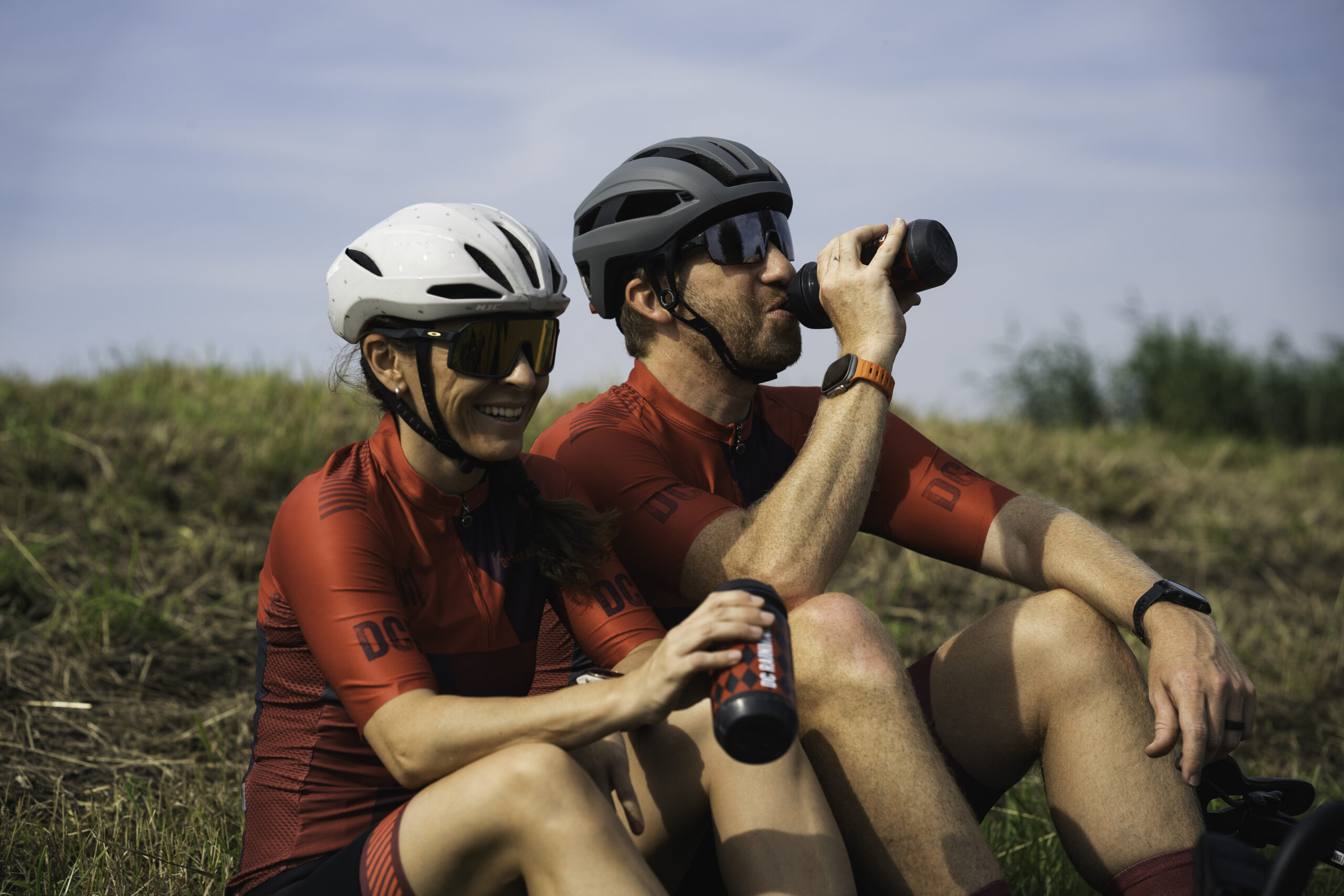
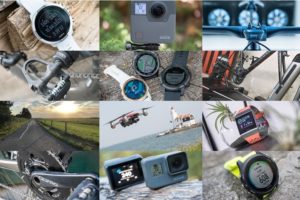
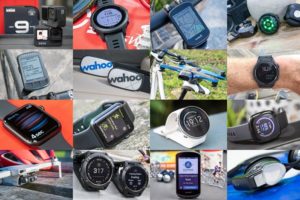

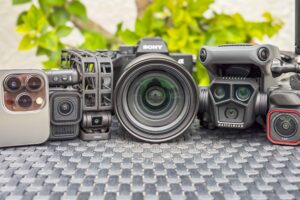

How can I purchase one? I don’t see it on their website?
Yeah, I don’t see it listed yet (at least on the global site), but AmazFit says it should be shipping today.
So aside from wanting the whoopish form factor why would one choose this over something like the active 2 which is the same price. From what I can tell they both have the same sensors but has active 2 has a screen, gps and smart watch capability… My opinion: I think this thing would sell like crazy at say $50ish but at $99 they are just playing on the the I want a whoop but whoop is too expensive crowd. But they would win everyone over at $50 bucks!!!
This totally intrigues me, almost enough to drop money on one right now. But I’m also in no rush, so I might wait until September and see what Polar has to offer.
This is great! Ive been looking into this since the announcement.
Any idea on release date
It’s available now on their website (at least the US one, which I checked)
Can you provide a link?
Hello, and thanks! Is there any other added value instead of a lightweight watch, or rather a nylon strap or a helium ring?
It depends on your setup. Since I’m in the Amazfit ecosystem, I can use the Helio Strap alongside my non-Amazfit golf watch or my mechanical watch, I’d just strap the Helio to my other arm or bicep to keep all my health data synced in the app.
I’m curious if Whoop has a patent on their snap on battery. When I had a Whoop that was one of the best things. It could charge while I sleep and still get data. But I haven’t seen anyone else with that type of battery.
I believe they do have a patent on the wireless wearable battery pack concept. Or at least, I vaguely remember that. Maybe later if I’m bored I’ll dig into the specifics.
Since you can change the auto detect workout sensitivity it would be nice to put the lower mode and see if it would detect less workouts and even the lesser time after you end workouts right?
Or was already on lowest mode?
Yeah, I’ll give it a whirl and see what the reprocussions are. There’s zero information about what those settings do, other than what the screenshot shows.
Yeah but from screenshot you can basically see is how sensitive they are to the activities so low will probably consider the ones you did more HR, whoop only provide after a highest strain of 5 thats why you said it was good, for me i have low HR so unless it got some bad spike zone 5 during a 1h30 walk it never detect it for example
I don’t really care with it but i guess that’s what that setting will do…. kinda put a threshold on the HR/exertion higher to be considered an activity =)
Was wondering about that too.
I’m on Normal and it’s not showing anything crazy like this even though I’m having fairly active days on top of sports activities.
Ray, isn’t it possible that Apple doesn’t measure HRV at night at all?
Apparently Apple only relies on the accelerometer data at night to save battery capacity.
The issue here isn’t the frequency (and you can increase that easily, if you want), but the type.
Apple uses the SDNN format, whereas everyone else uses RMSSD.
Typo: “Best I a tell there’s only a single size SKU” – is it Best I can tell?
Thanks!
Thanks for the test.
And this shows once again:
The hardware is not the problem.
It’s a well-rounded software and app, etc.
I don’t need such a device myself, but I’m curious about Polar.
I have no experience with Amazfit in terms of firmware/software updates for their watches and how well they polish their OS.
Can anyone comment on this?
Ray, will you be testing the new
Amazfit Balance 2?
I have the Balance 2, TBD on where it fits into the crazy schedule.
Thanks for the review/write up. Interesting. Might have to wait for Garmin to officially come out with their Whoop competitor product. Is their ring worth the extra $100?
As an aside, there is one typo that I saw: “By far the highest band out there, with the Whoop 5.0/MG coming in at ~28g:” ‘Highest’ should be Lightest, I think.
Thanks!
Will it sync the health metrics to Training Peaks? Not bothered about using their Zepp app so long as at least HR, HRV and sleep can sync to TP.
I see it has a vibration motor, will it do phone notifications or that’s just for alarms?
It’s only ever vibrated for me for alarms, never notifications. I don’t see any way to enable it for notifications, in terms of any settings or such. Happy to be wrong though.
(I would guess that enabling vibration for notifications would potentially slaughter the battery life)
I could deal with shorter battery life if I could get rid of my smart watch. That’s basically all I use it for anyway 🙄. And I miss my real watches.
Hehe, same here! One thing it won’t do is allow wireless payments though, or could it?
I would argue that the focus on daily metrics and not on Strain/Recovery a la Whoop is not a bug, but a feature: for workout feedback you’re expected to put on their watch that has a display and can provide workout guidance as well as show live data. The strap is supposed to be used at times when you don’t want / can’t wear a watch. Obviously, in this case the absence of an upper arm band looks weird.
I think that’d be true if they were positioning this as a seconadry device to their existing devices, but everything I’ve seen is positioning it in the single-device category.
Attached an example from their PR materials.
That said, even in a multi-device scenario, the challenge is more of how they present the data to you in the app, including the example I gave on run/trainer.
Any idea on which will be the best watch to pair this with from an accuracy point on view? GPS and HR.
Whoop for the WIN! I am really waiting for polar new device Sept 3rd, if i leave whoop , would be for polar but , last time i wore polar watch , i hated the app , its very boring.
For the Biocharge comparison between the Run (-25) and Ride (-2) => with the run at 12:18, although the average HR was comparable, much time was spent in the VO2 Max zone (42% vs 0%). So, albeit with the limited information in the article, it’s reasonable to extrapolate that there is some relation to HR zones and that a higher HR has more impact to this metric.
Undoubtedly. I don’t have a problem with the run allocation, I have a problem with the bike ride. A bike 49min bike ride with a relatively similiar average HR shoudn’t have essentially no Biocharge impact. After all, the majority of the ride was in the next zone down (Anaerobic). And these are default zones no less, with a default zone of 160bpm+ is a silly high value to call ‘VO2Max’.
Now, similiar things do happen with Garmin’s Body Battery when you basically run out of battery, except in that case, Garmin hasn’t built their entire cornerstone around Body Battery as a training metric. That’s why you have Acute Load & Recovery Time (with Sleep) as the main pillars of Training Readiness.
I was wondering if you’d maybe run out of BioCharge when you did that bike activity?
Totally plausible.
Ray can you check if there’s a typo on the sleep times for the 1st night? It says 2:28 sleep start time for Amazfit, but that would be a half hour error, while your text seems to imply it was in line with the rest of the devices.
Coros HR or this Helio Band?
Two totally different things. COROS HR is designed as a dedicated HR sensor for workouts, whereas Helio band is designed for 24×7 wear.
Now admittedly, the Helio does very well as an optical HR sensor, and can broadcast. But I’m not sure how long the battery would last in broadcasting mode.
24/7 includes workouts, isn’t it? But If I Imagine I have to wear my hr-band after workout again…meh. I suppose that I have don’t really undeestand why I additionaly should wear a HR-Band in between workout sessions. Most of training-based optimazations are beside measuaring HR; ortho-, muscle- and -nutrition supporting stuff.
All the devices (watches, bands & so on) based on identifying HR-based topics. To own 3 Gadgets that all “attacks” issues from the same vector seems not massively effizient.
Thank you for the review. This sound good. I would go for it now but, I think I will wait to see what polar brings to the table and I so hope they make a better app. I used their watches years ago and as of today the app is till the same boring app. I am also interested to see any reviews on the Hume Band which I believed just started shipping recently and a few reviews complained about being unable to connect to the app.
Managed to pick up a HYROX version and one of the things for me is the ability to access the Zepp app and track calories with their system.
It’s pretty good.
The band wouldn’t replace a watch and I genuinely don’t think the Velcro is going to last long and it’s not massively secure.
I like it and looking forward to an arm band to try further up the arm.
Good article. You spelt HYROX wrong early on. Just letting you know.
😜
Anything about 3rd party integration?
Do these types of devices have to sit on top of the wrist for accuracy, or can it sit on the bottom of your wrist? If one were crazy, could you thread a watch through the band as well if you wanted to wear a mechanical watch during the day and not have two bands around your wrists?
Having worn Whoop both ways several times, as not to overwhelm a single skin spot, in my experience the metrics were consistent.
The only exception I found was wrist temperature, and my guess is that it happened because of sleep position. Depending on how you rest your arms, the sensor will be more or less exposed to the environment, when worn on top of the wrist or underside.
How’s the light bleed during the night? I’ve noticed with their watches and especially with the helio ring that the LEDs are engineered in a way that it lights up like a Christmas tree during the night.. To the point of actually waking me up.
Not ideal for a sleep tracker :-)
Used it only for 1 night yet, but I don’t think that will be a problem here. The sensor and the band are so light, and it’s basically like just having a Velcro around your wrist, that nothing really moves and seems impossible to “turn over”, it’s not a stretchy strap.
I’m not thick wristed, so the sensor sits a bit like in a groove of the wrist, no light escapes. :-)
Would this HRM communicate directly with my Amazfit GTR2? I love my watch, but it is not terribly accurate at measuring my heart rate and seems quite susceptible to cadence lock. I would love to upgrade, but am wondering if you can view the Helios data directly on my existing watch or if it only connects to the Zepp app.
Thanks for your time.
What are your feelings about the VO2 max readings?
According to the instructions you need to run with a connected phone (because the band doesn’t have GPS), for +10 minutes and reach at least 75% of max HR. I’ll try it tomorrow and report back if I get a reading. Will also use an Apple Watch so I can at least compared it with that. I also have a Garmin but I’m not sure if the VO2Max is accurate, haven’t run in earnest for a while.
Did the run today, a trail loop I have nearby. Probably not the best option since it has a lot of elevation change, but it’s an easy way of getting a good HR going in a short time.
A 17 minute run was enough to get a reading in the app, it estimated my VO2Max at 40. Concurrently I used a Garmin with a HRM Pro Plus and funny enough this run upgraded my VO2Max to 47, it has been 46 for the past month or so.
So for now I would say the Helio Strap is undervaluing my VO2Max, but it’s only one data point.
Can you start a specific workout (on the app) and then leave the app behind (say in the locker room) and still have it track the workout? That’s the biggest problem with the ring for me – I don’t want to have my phone with me when doing a workout and not wearing a watch either.
Replying to my own question now that I have a Helio Strap in case others were wondering. If you start a workout on your phone and then leave your phone behind the workout ends and you don’t get that data.
I wore a Whoop for 18mths until they stopped offering discount subscriptions – despite my then 20hr per week training schedule I absolutely did not see the value in how much it cost. I kept it post-subscription because it worked well as a HRM on Zwift – until I lost the charger.
Something I did like that wasn’t mentioned above is the Whoop can be charged without taking it off.
After several apple watches I moved to the Amazefit T-Rex 3, which for how I use it, blows the Apple Watch out of the water.
I’d agree that the Zepp app is pretty confusing. To me the best feature is actually the ai food tracking. You describe or take a photo and it does the rest. Of course it as accurate as weighing each item but if I’m at a restaurant I can just snap the food and it tells me the nutrition.
I’ve been hoping for a whoop alternative and if amazefit have released one 1/4 the cost of an annual whoop subscription, I’m in. As long as the hardware works (which it sounds like it does) the software can be tweaked.
You’ve peaked my interest as someone with Charge 6 as 24/7 HR device on one hand. The other hand features a combo of few other; from a formal mechanical watch to a full fledged digital sports watch.
With exercise detection turned off on Charger 6, wrist HR matches well enough to the runs and bike rides recorded on dedicated devices with the HR chest strap. Sounds like the Helio strap should be able to replace Charge 6 with added benefit of not constantly being asked why I wear 2 watches at the same time. 🤣
I wish Garmin would make a device like this. I really want a Forerunner without the display.
Is it possible to sync data with Coros app?
Hello,
I’m using Bevel app with my Apple Watch Ultra, data from the Helio Band should be sync with Apple Health, right?
So I would get the metrics into Bevel even when not wearing the Apple Watch and solve most of the issues
What do you think?
Thanks
From what I’ve seen so far the Helio Strap (Zepp app) writes the following metrics to Apple Health: Sleep, HRV, HR, resting HR, VO2Max, Blood Oxygen, Respiratory Rate and Steps.
It also measures other things, eg. Wrist temperature, but doesn’t push it to Health (not listed as source).
which all goes to show how the WHO, and the norwegians, have got it right with PAI etc, one simple metric which largely regulates itself and should lead to long-term health and fitness, which i think is what most smartwatch users aspire to
however, most marketing seems focussed on users who compete against each other, and themselves, i.e. looking for marginal advantages, day by day, to get a new PB/SB, or do well in a race
Hey guys, is it somewhere documented, what is the sampling rate for HR in exercise and non exercise mode?
“All of these things are configured in the settings panel of the Zepp app, which is Amazfit’s confusingly named app.”
That’s because the manufacturer is Huami, selling watches under the Zepp and Amazfit brands, isn’t it?
Ray, I asked this in the Polar thread but maybe a little too late so if you don’t mind, I’ll ask again here. What is the user experience like using something like this in conjunction with, say, my Garmin devices. Its interesting that you note that this doesn’t drive towards Whoop-like metrics but honestly, my training load is something I track in Training Peaks and/or Garmin. If Biocharge is more like Body Battery, then that’s actually a metric that I find more useful.
I’m just not sure how to properly use 2 different ecosystems together. Ideally, I would get all of that into one place but if I’m using a Garmin to train and something like this or the Polar Loop thing coming (that’s what I’m going with for now :) ), do I just not get enough data in either ecosystem to make any of the metrics valuable?
У меня опять нашения на одной руке Whoop, на другой – epix pro 51 mm. Мне очень нравиться такое сочетание, каждое утро получая готовность к тренировкам и ещё некоторые данные Гармин и восстоновление , сон, и рекомендуемую нагрузку в Whoop, я скармливают эти данные Gemini. С целью получения реальной конечной нагрузки на день по Whoop на базе двух приборов. Виджет нагрузки вынесен на рабочий стол. Таки образом, я понимаю где я нахожусь. Точность с моими ощущениями меня потрясает. Модно сказать таки образом я нашел баланс между реальным отдыхом и восстоновлением. Лучше и быстрее поогресирую и чувствую себя.
Does HRV during the night seem similar? I always felt like Garmin was overestimating the final score, probably they are not filtering probably the outliers during sleep, that are inevitable for a metric like this (because you move, change positions, led light bleeds out, etc).
Знаете один в один, отличаются в пару единиц, даже средние значение за 7 дней у меня сейчас одинаковые!
“Ray, I asked this in the Polar thread but maybe a little too late so if you don’t mind, I’ll ask again here. What is the user experience like using something like this in conjunction with, say, my Garmin devices. ”
Honestly, they don’t play well together. I wouldn’t try to use both. I’d probably just wait until Garmin does something in this space. Problem is that it’s unclear when on earth that might be.
in may there was the rumor (i think over at 5krunner) that garmin might launch something like this before end of august. From your experience, might that me realistic? Or was this rumor what eventually was released as the sleep band?
I wish id read this remark in the main story, I bought one mainly to use as a HRM with my Garmin edge and Zwift, but it causes a lot of disruption to the sensors on the Edge disconnecting everything and reconnecting :(
Sorry to hear that, Roger. I’ve been using mine with my Garmin Edge 1030 plus and it’s flawless (other sensors: di2, 4iiii power meter, Garmin radar)
Glad to hear there’s hope, I wonder what my issue is, di2 stayed connected but my assioma pedals and the Helio kept disconnecting and connecting, it also disabled my incident detection.
So, for me, the use case is the ability to ditch my smartwatch during sleeping (FR955) and use this for metrics during sleep. BUT that implies that the daytime data from the watch and night time data from the strap must be combined successfully for 24/7 monitoring. Surely, data from the Amazfit band will not combine with data from the FR955. Here is the Q …can you combine data from the Helio band and an Amazfit watch in their app?
Yes there is one app and all the data is combined automatically. So on days where I sleep with my Amazfit ring instead of my band it shows up as sleep.
Since Amazfit can sync to Apple Health, could we use the Bevel App and then get more of a Whoop data analysis feel with strain, recovery and sleep? It would be a strong device with good accuracy pair with an app that does data analysis more similar to Whoop?
As a Bevel user, I was thinking the same thing & should be able to find this out soon enough. I bit the bullet and ordered the Helio strap as an “experiment” to wear alongside my Apple Watch (I still plan to get the Polar one when it launches). Mine should arrive tomorrow, so if I remember I’ll report back if I see any significant changes in my Bevel data (although it might take some retooling of settings)
oh great! Please let us know hot it goes.
Do you plan to wear it together with the Apple Watch when you do an activity?
Thanks!
Yeah, I plan to wear it 24/7. But I’ll turn off the auto workout tracking on the strap, and continue logging my workouts on the Apple Watch (will turn it off so I don’t end up with duplicate workouts I need to clean up later).
Here’s a thread on Reddit that talks about this very thing:
link to reddit.com
You can change the priority of the source for relevant metrics, putting Zepp higher on the list than your Apple Watch for example.
@LaRosa I am also really interested in the Helio as a data source to Bevel Health. How are you finding it?
Can you manually add an activity after the fact (since it runs HR constantly)? Like if I know I went for a walk from noon to 12:30pm, can I make a manual activity and it pulls the HR data from that time period like Whoop?
That was my favorite part of whoop that I didnt have to stress if I didnt start a timer or something.
Not that I can find/see.
No all you can do is trim an activity that was autodetected and you can’t add before/after unfortunately.
I don’t know, such a device is only for tracking data and if that isn’t accurate enough, like here, its useless imo.
I’ve been begging for Garmin to come out with something like this since my Garmin Vívosmart 4 got damaged in an accident. I don’t want a fitness watch, as I love/prefer analog watches and want something without a screen to track daily fitness. I will not be paying a Whoop subscription, but like the form, I’m also into the Garmin ecosystem given my cycling computer and connect historical data. Might have to get the Helio or the other one from Polar if Garmin doesn’t budge.
Ray what’s the best armband HR monitor you recommend? I had to switch away from a Garmin chest strap (rash weirdly after many many years) and have been using the Coros. It’s ok but some rides not that great. Thanks.
I’d say the COROS HR & Polar Verity Sense are both the ones I go to. I’ve seen very slightly more odd quirks with the COROS over a long period of time, but that’s usually evened out by the fact that the Polar Verity Sense is more likely to flip accidentally than the COROS HR.
Thank you.
thank you! Great review, and I appreciate you comments and recommendation at the end. I like that the Helios HRV is accurate (or at least it’s accurate when you compare its reading to the Whoop reading which I have read is quite accurate).
Do you know how the Helio HRV compares to Fitbit HRV?
Not sure about Fitbit but in his latest YT video he compares the Helio Strap HRV with Oura, Whoop and Garmin and they are all similar.
Is it possible to connect with Garmin Connect?
No.
With the exception of a handful of cycle training platforms (e.g. Zwift, TrainerRoad), Garmin doesn’t permit/consume inbound competitor wearable data into their platform. To be fair, most other platforms don’t either (at least not automatically).
Has anyone tried the broadcast feature to connect to GPS cycling head unit? Price is very reasonable for a tracker and if it can broadcast to my Wahoo. My old armband heart monitor is slowly headed toward retirement. Am interested in how well it works and battery life in broadcast mode.
Here’s what I’ve tested:
1) Garmin Forerunner 970: Establishes pairing, but fails to enumerate the HR value [Broke]
2) Garmin Edge 1050: Establishes pairing, but fails to enumerate the HR value [Broke]
3) Peloton App (iOS): Establishes pairing, and properly enumerates the HR value [Good]
4) Strava App (iOS): Establishes pairing, but fails to enumerate the HR value [Broke]
5) Wahoo ROAM 3: Establishes pairing, and properly enumerates the HR value [Good]
6) Zwift App (Mac): Establishes pairing, but fails to enumerate the HR value [Good]
It looks like the issue on the Garmin side (and perhaps Strava side), is that Amazfit is broadcasting itself as a Secure BLE connection, when it actually doesn’t seem to be (doesn’t do any of the other auth steps you have to do). Thus, when Garmin attempts to negotiate that secure connection, it fails. Amazfit is saying they’ll have a fix for it soon.
Note that if you have an older Garmin device that doesn’t support the secure pairing, then you ironically don’t have to worry, since it doesn’t know what to do with that faux-advertisement from Amazfit. Which is why the Peloton and Wahoo units work, but not Garmin & Strava.
Is there any update on this use case (heart rate broadcast to Garmin Edge)?
Did Amazfit provide an update to get this working?
“Amazfit is saying they’ll have a fix for it soon.”
Thx for the review! Did you test the accuracy of steps?
How would you rate this to use as a simple HR monitor to pair with a Garmin 530/540/830/840?
For those of us who prefer wrist-based to a chest strap this seems like it could be a good choice both for outdoor riding and also when indoor in the pain cave.
Although I couldn’t quite figure out whether this has any better functionality for simple HR than the Amazfit Band 7.
As always love the reviews!
Fantastic review, thanks! Do you know if I can connect it to Suunto Run or different watches?
Curious if you plan to test the Helio Ring or if you expect it to be similar to the band.
I have both. I bought the ring first because I wanted a non-watch form factor and didn’t like the band. It is great for tracking steps and sleep but the problem is that it doesn’t auto-recognize a workout and I can’t manually start a workout and then leave the phone behind. So if I wear it during hockey it records my heart rate every 5 minutes whereas a band/strap workout shows me the constant HR during the activity.
my wrists are overloaded.
the helio fits great on my ankle.
probably throws all the data off.
my garmin on my wrist has all the screen data I need but would like the tracking the helio could add if ankle data worked.
Hi Ray, great review. I got mine a few days ago and it was going ‘ok’ for the first few days but was showing a lot of gaps in the HR trace overnight. I have a low RHR of around 38. Then after a few days it started reporting my RHR literally twice what it is / was at 75. Even once I was awake and at my desk it reported twice (confirmed with the old finger on the neck and stopwatch). But now looking at the overnight HR trace it was all continuous, just twice what it was! I’ve googled around and it seems to be common issue that for people with low RHR it assumes it cant be right and so just doubles the HR. This is with it being worn on the wrist FWIW.
I have the same problem. My RHR is arround 40 a 45.
Amazfit shows ± 90.
In one week it is about 2 times right.
I found the HR in training to be very accurate.
They seem to have fix it now with one of the recent firmware updates. Is tracking my RHR and HR really well now even though my RHR is in the 30s …
Thanks for the review. I know you can sync activities from the band to Strava but can you do it the other way around? If the activity tracking is poor then being able to use a dedicated head unit/heart rate strap to record a ride and have it sync to Amazfit with the accurate data would be a cool feature.
Hi Ray, thanks for the review. Have you had the chance to evaluate whether there are improvements in the areas you mentioned as improvable? Just were wondering as other sources mention improvements in the software, especially when it comes to activity detection, biocharge status and sleep score. Also, can you already compare whether there is a big difference between this one and the new Polar Loop. Been thinking about getting the Amazfit instead of waiting for all the Polar improvements so I can start right know but would like to avoid buying the wrong device to track my health status. Many thanks!
I have exactly the same question!
How is it on tracking HRV and how that relates to activites or a food diary?
Hello everyone! Will it connect with Garmin edges in the future? I am waiting for that feature so that I can use it also as a HR monitor during biking workouts.
S
Has anyone tried broadcasting heart rate from the Helio Band to a Hammerhead Karoo 3? Did it work successfully?
Hi,
Opinion needed and you have tested virtually everything.
I am looking for a body/HR monitor that I can use to gauge body stress from anything that causes the body stress.
I use a Frontier X for exercise but it’s a chest strap and I’m a stomach sleeper so that hasn’t worked. Any wrist mounted device gives me erratic/no results. I have used a Polar verity sense on my upper arm with consistent results but no HRV data.
I do not want to pay for a subscription so no Whoop + they PO’d me off with info. they wanted to scoop. So that got sent back.
New polar?
thanks ian
G’day Ray, I hope you’re well.
I was wondering if you knew when the Amazfit Helio Strap Special Edition might be available?
The updated strap looks so much better and solid.
Do you know if this will become a new permanent upgrade to the current Helio strap?
Thanks!